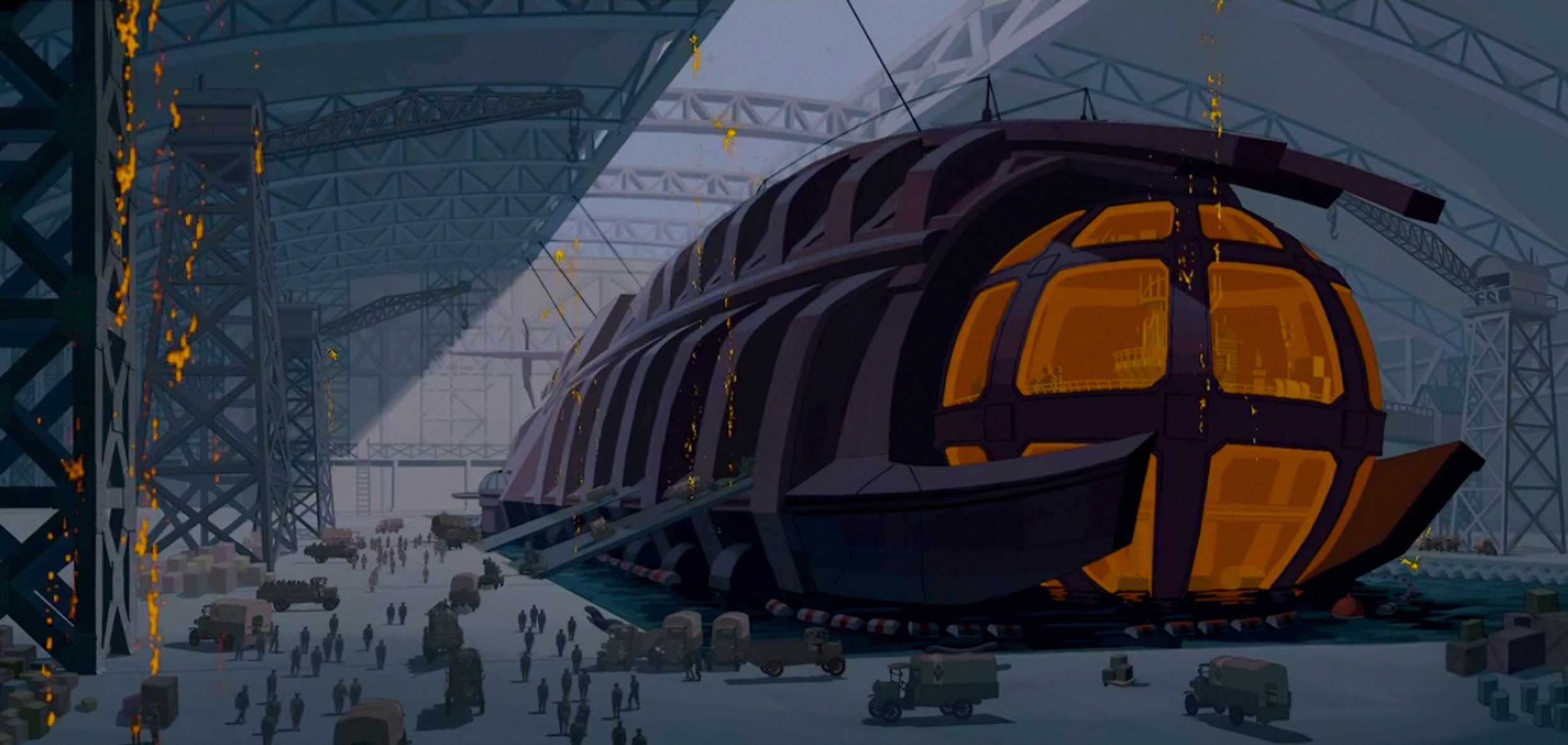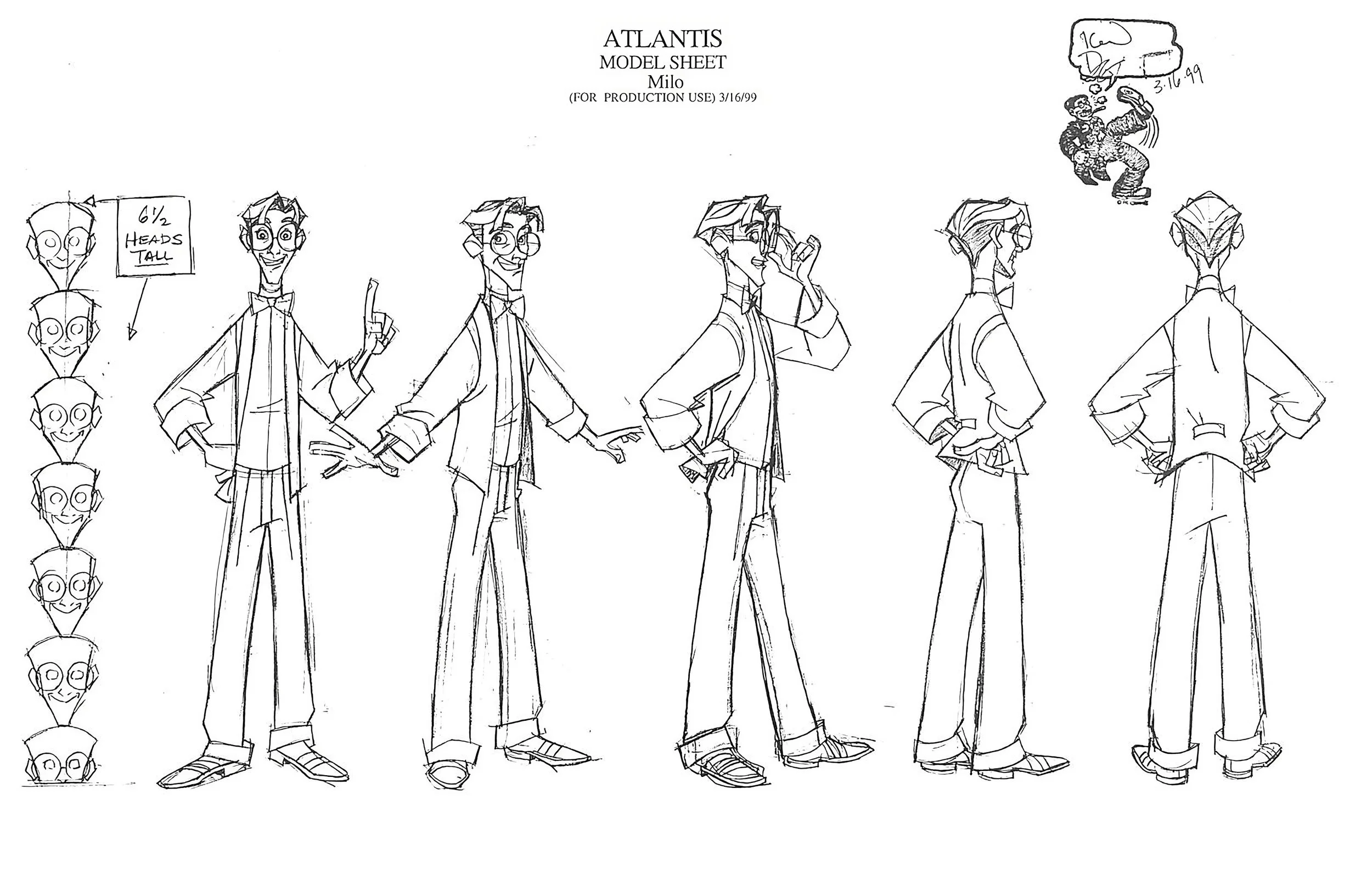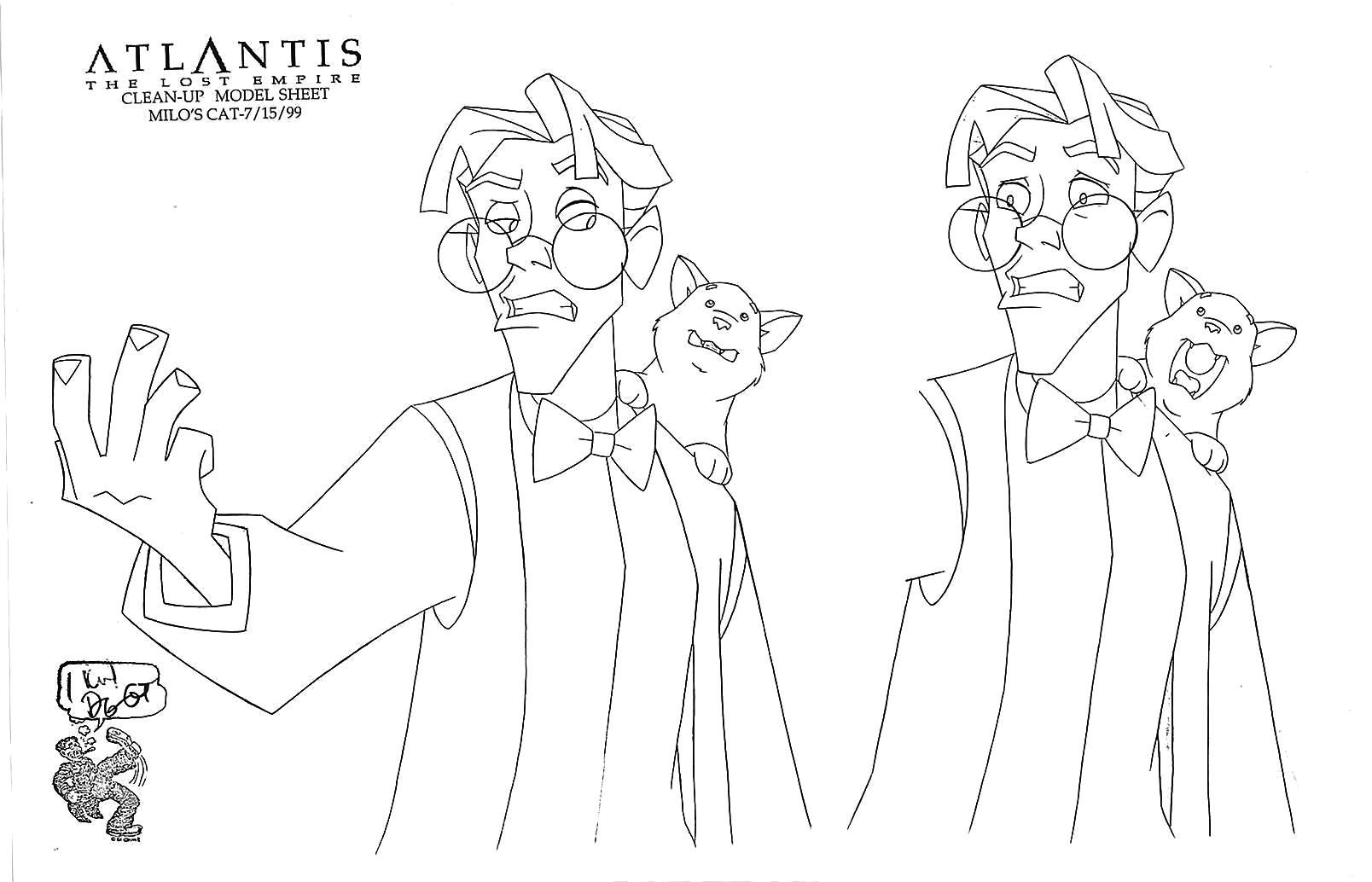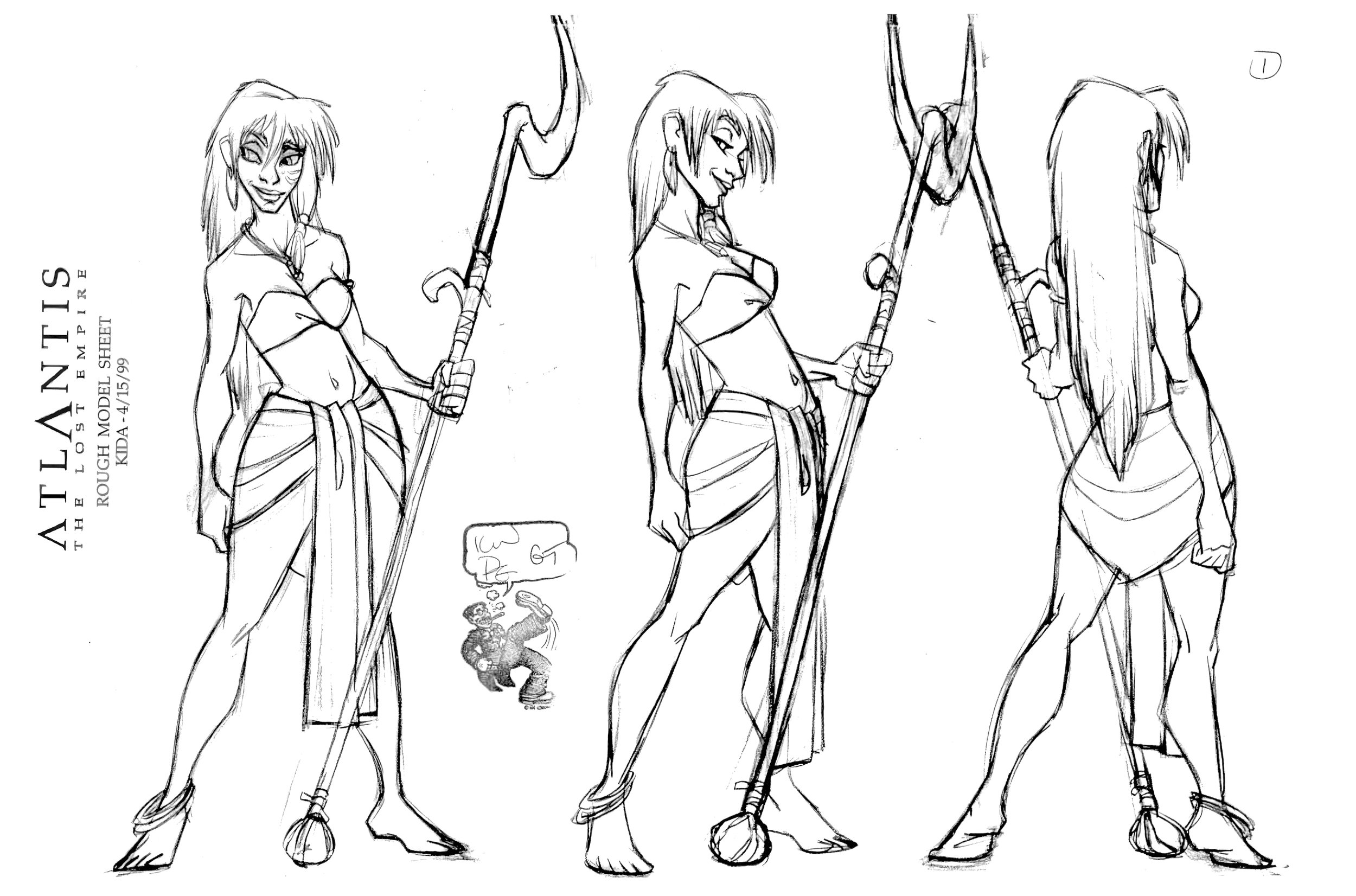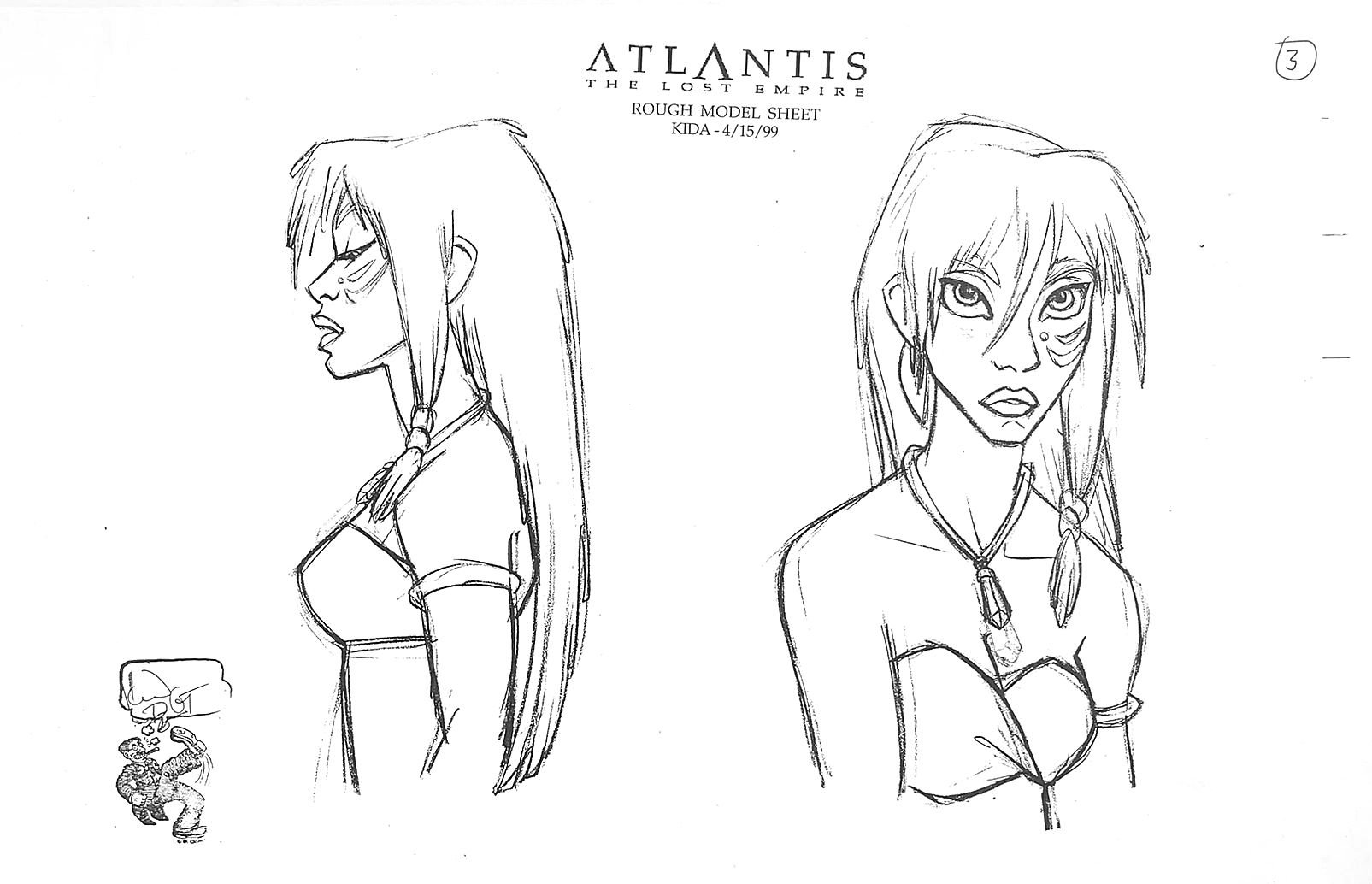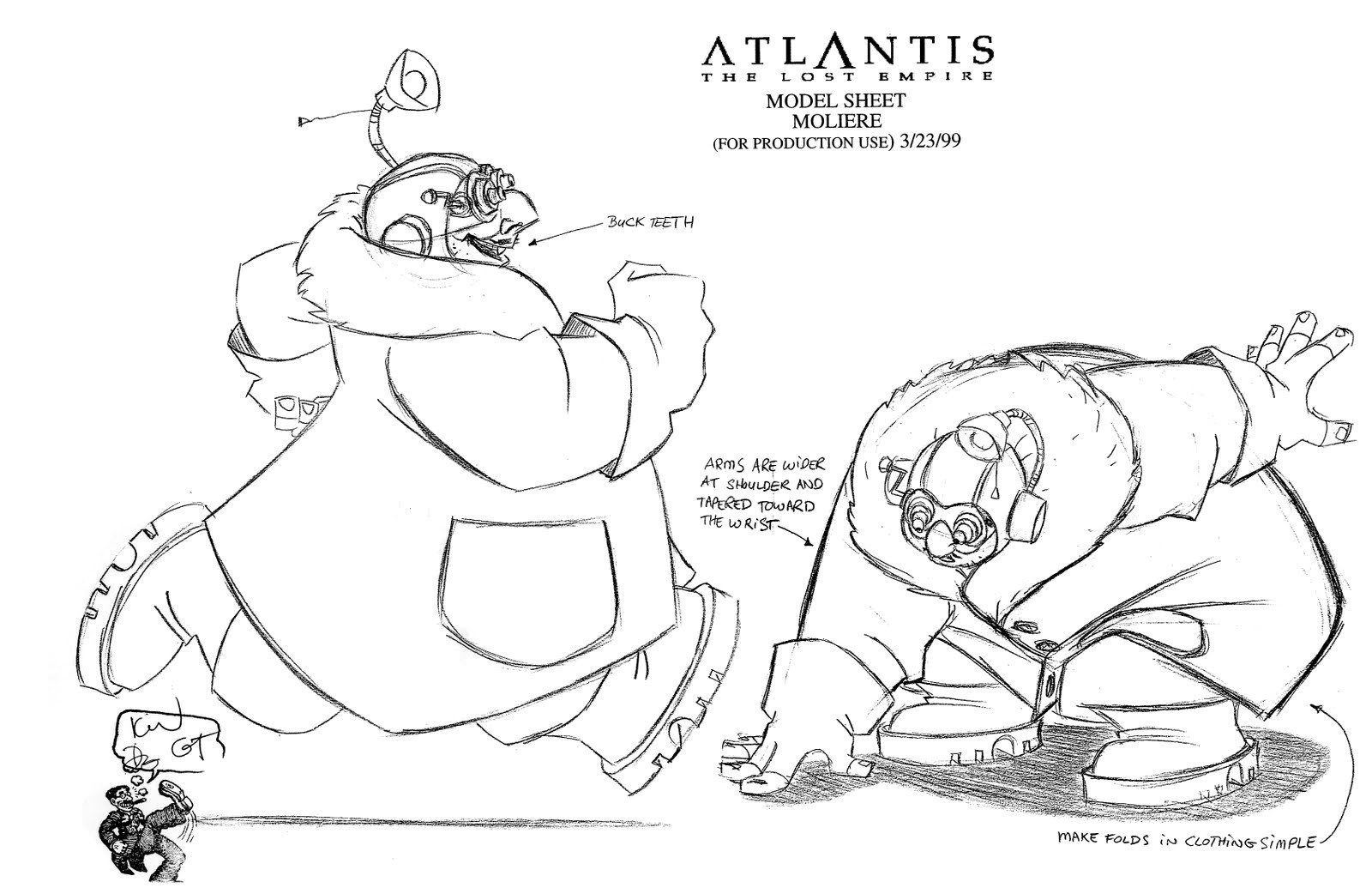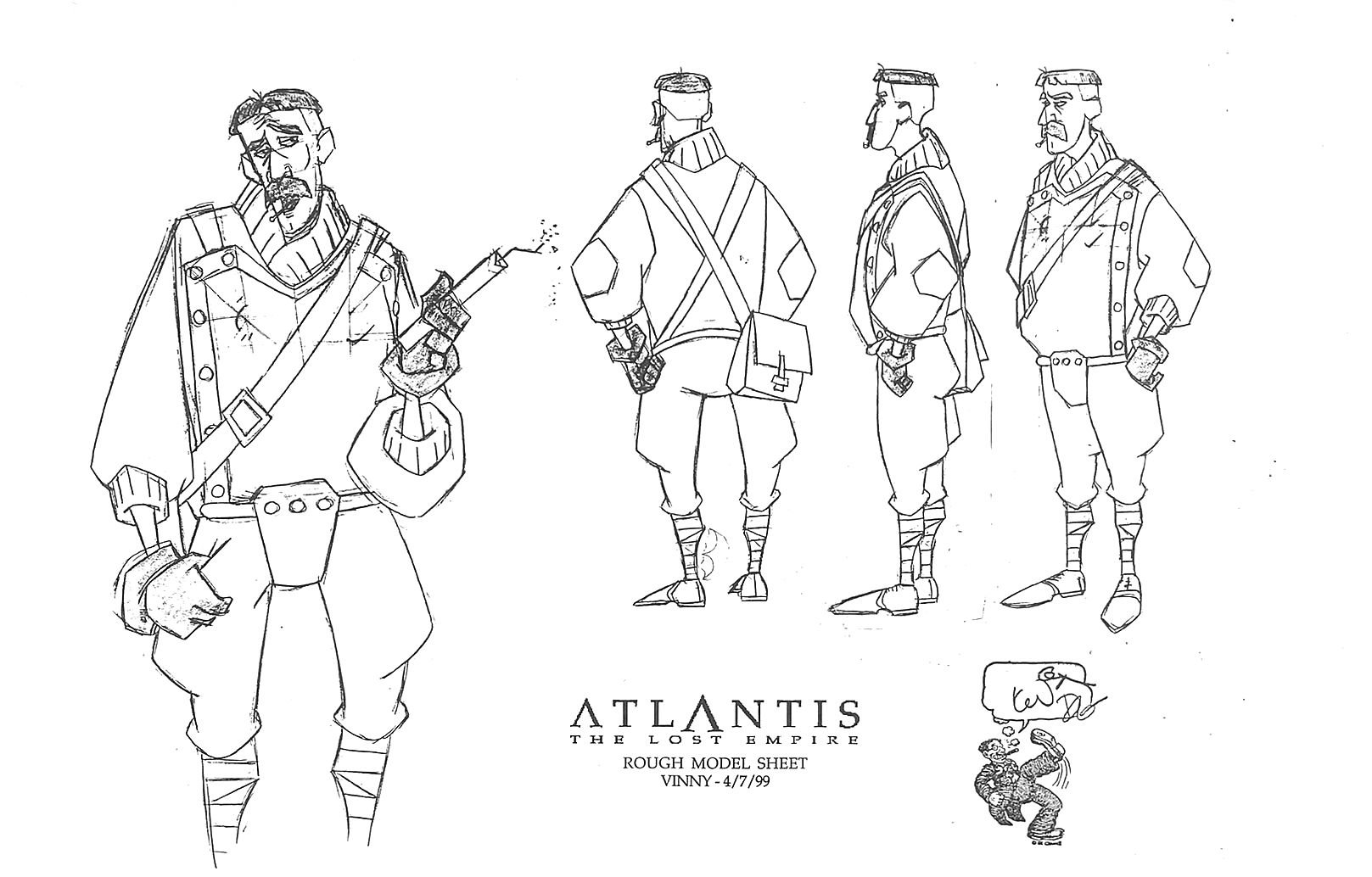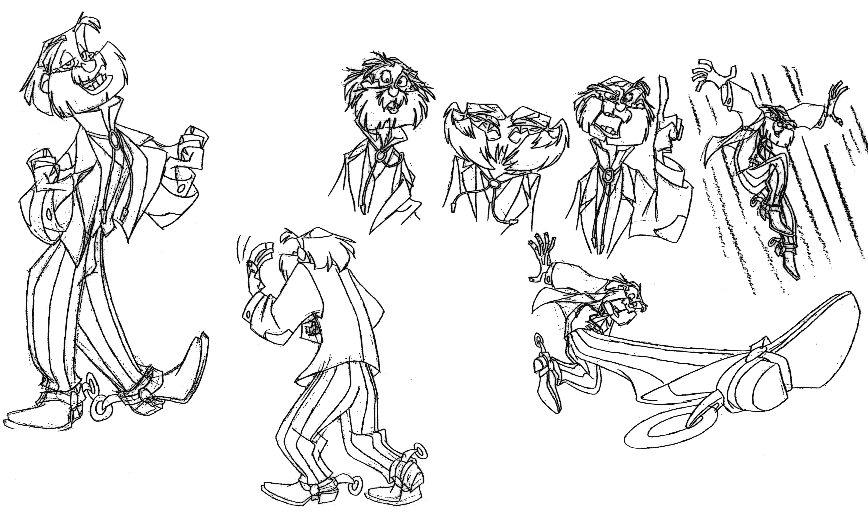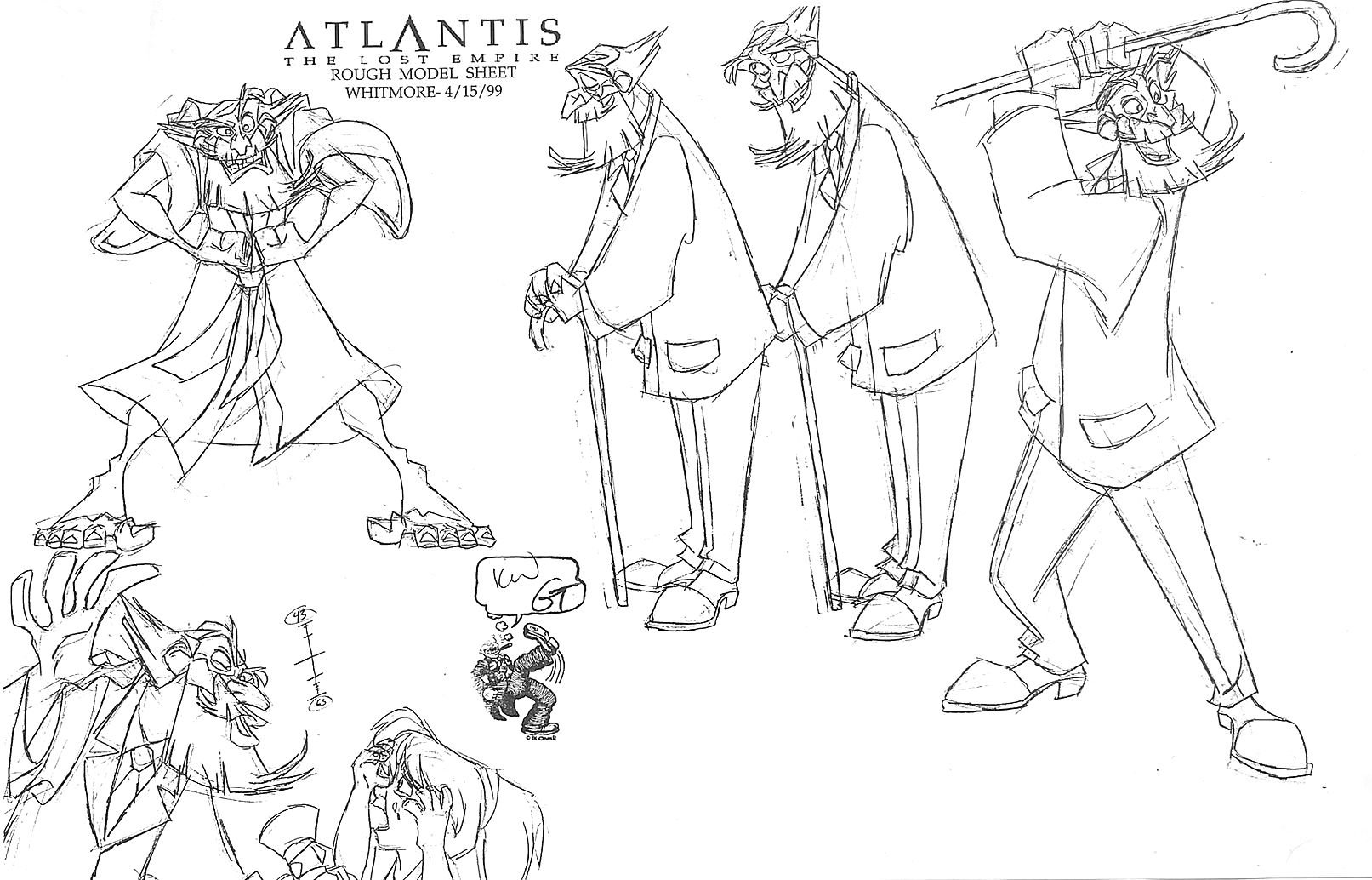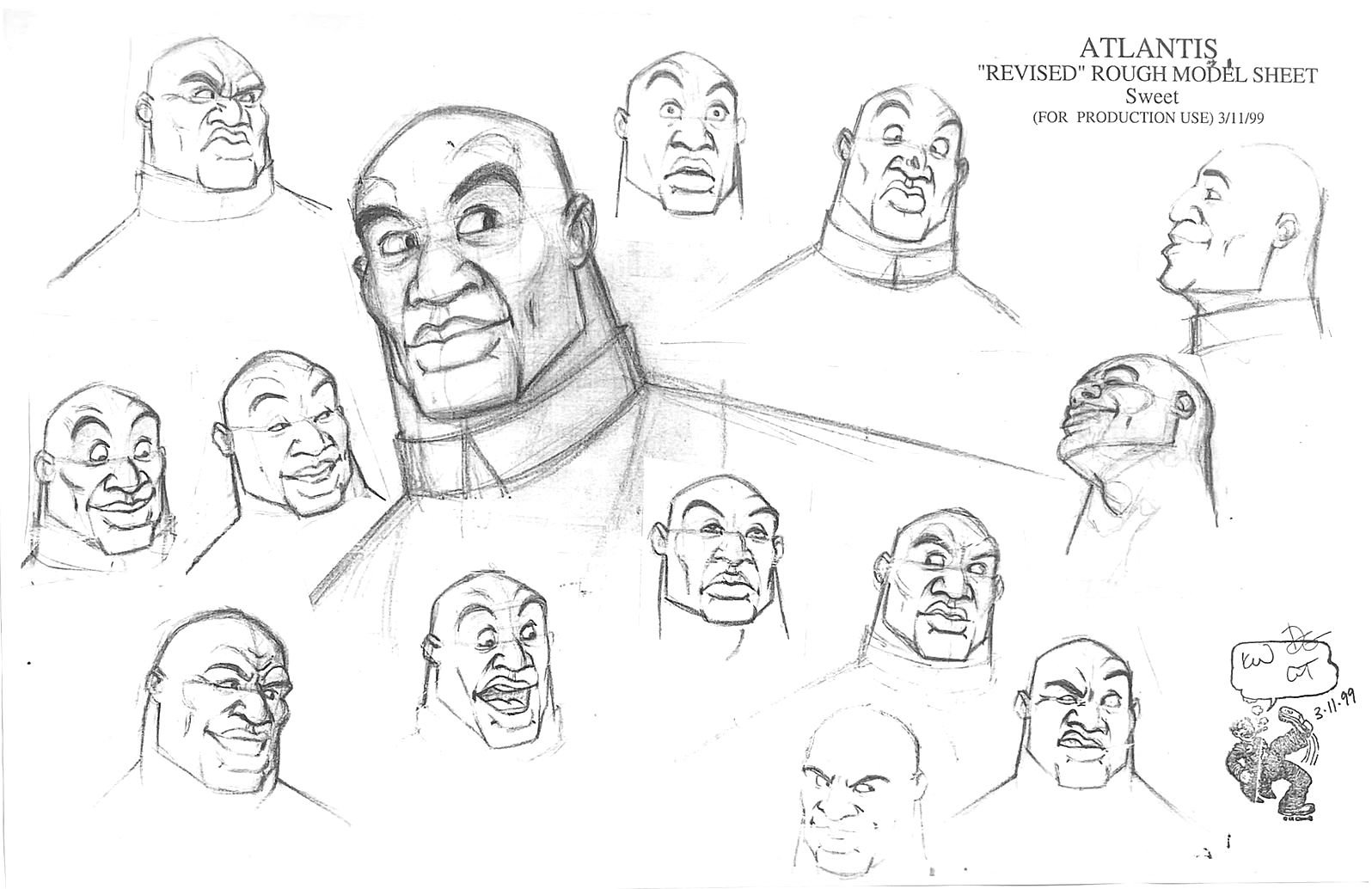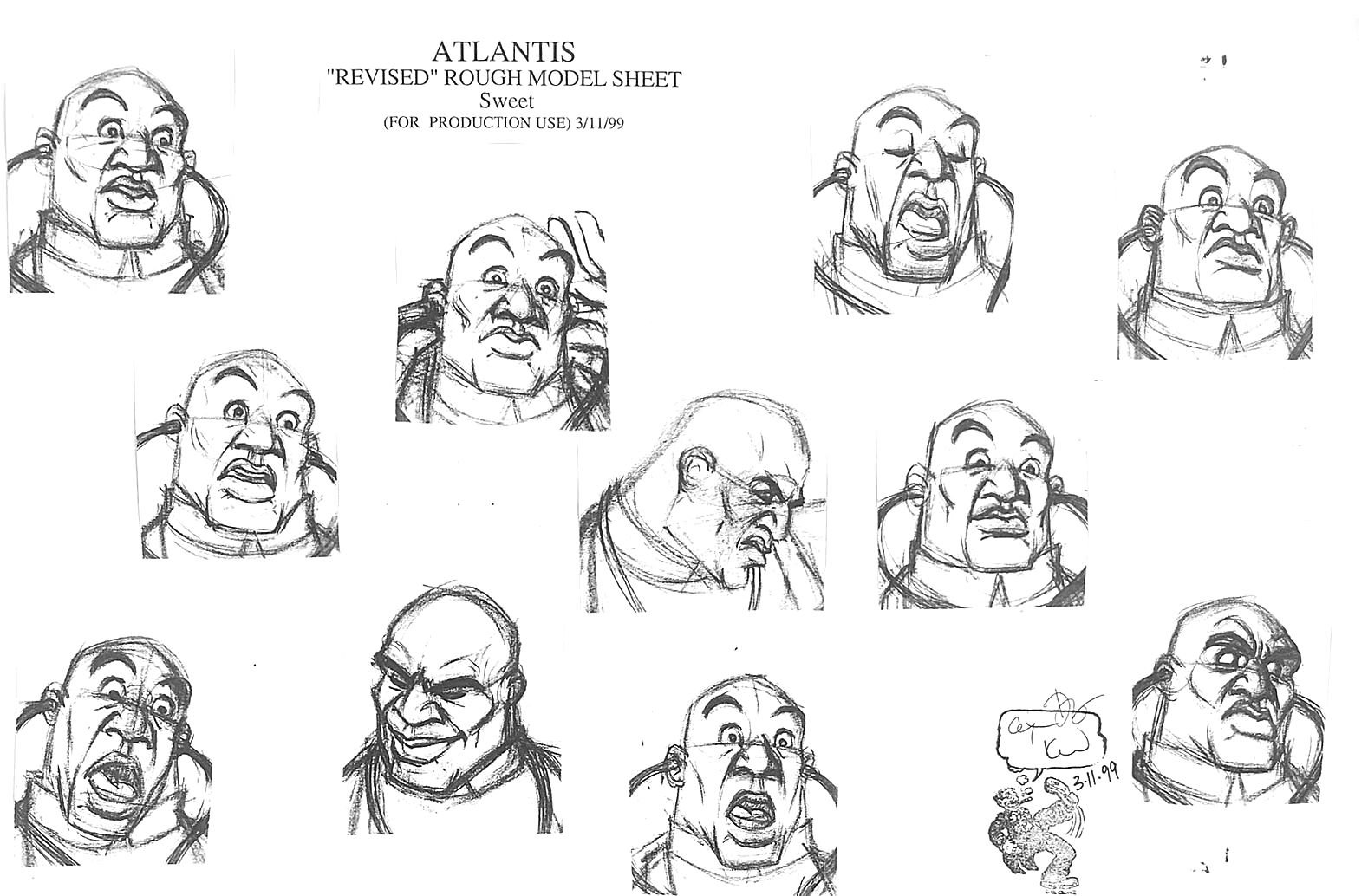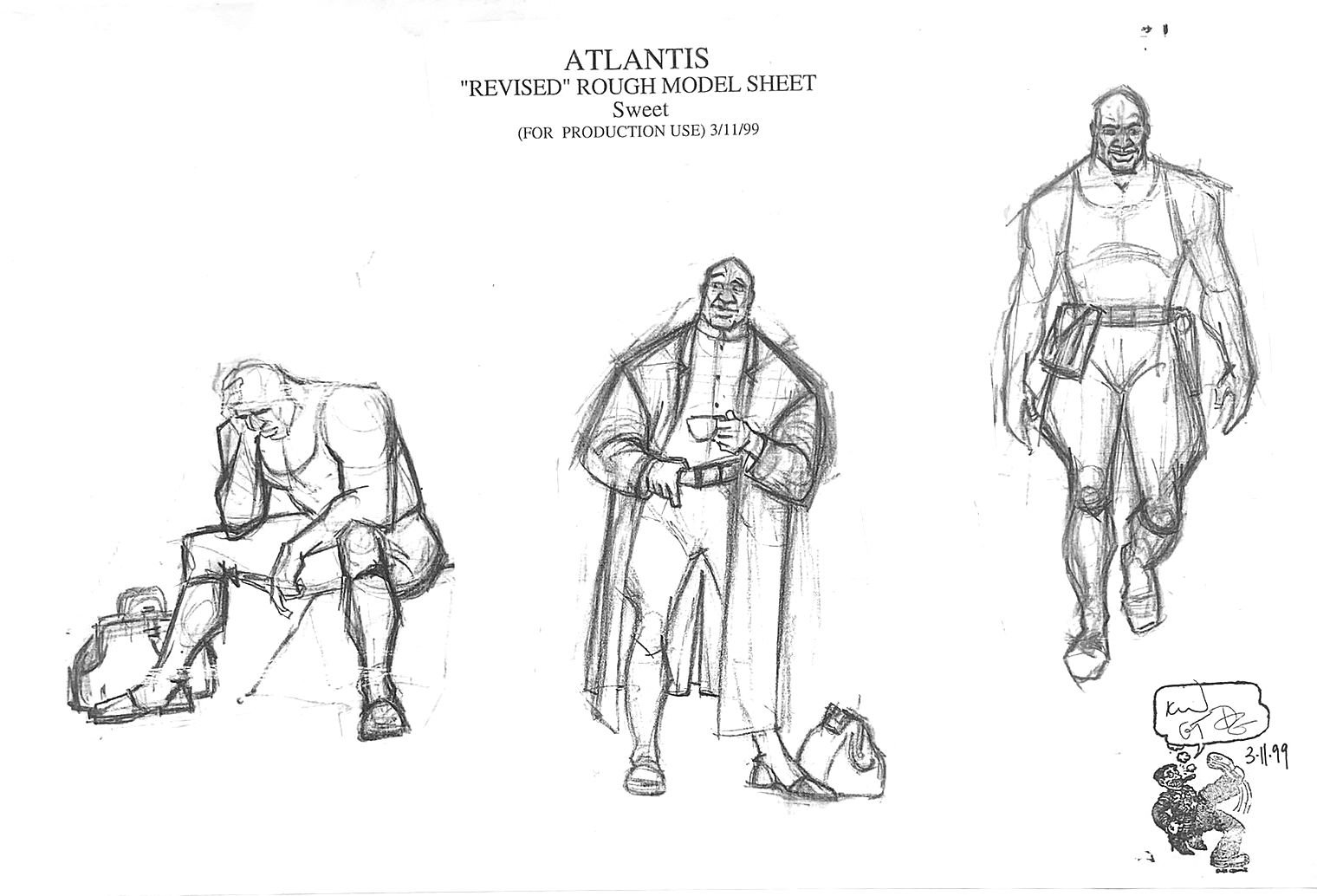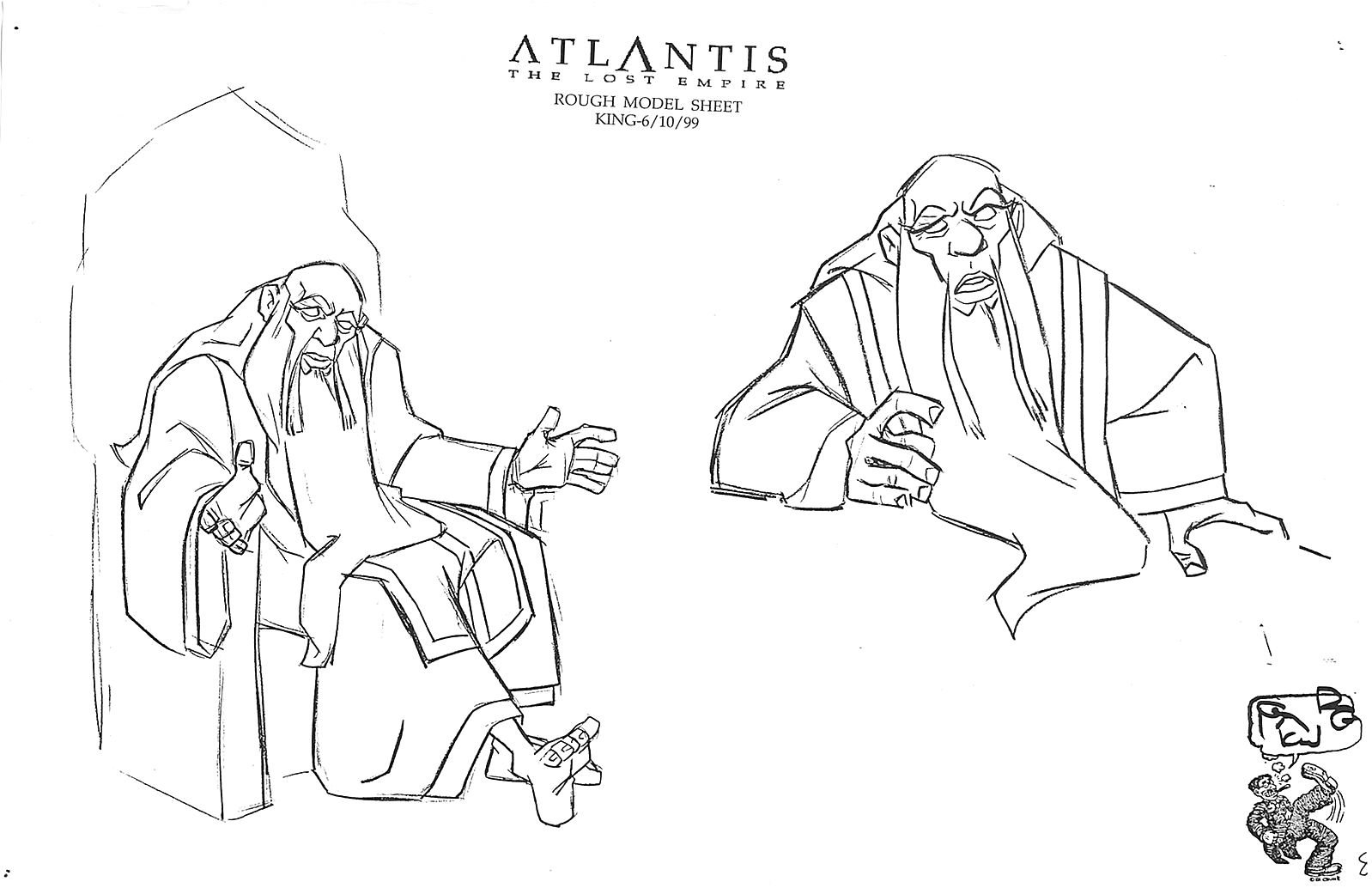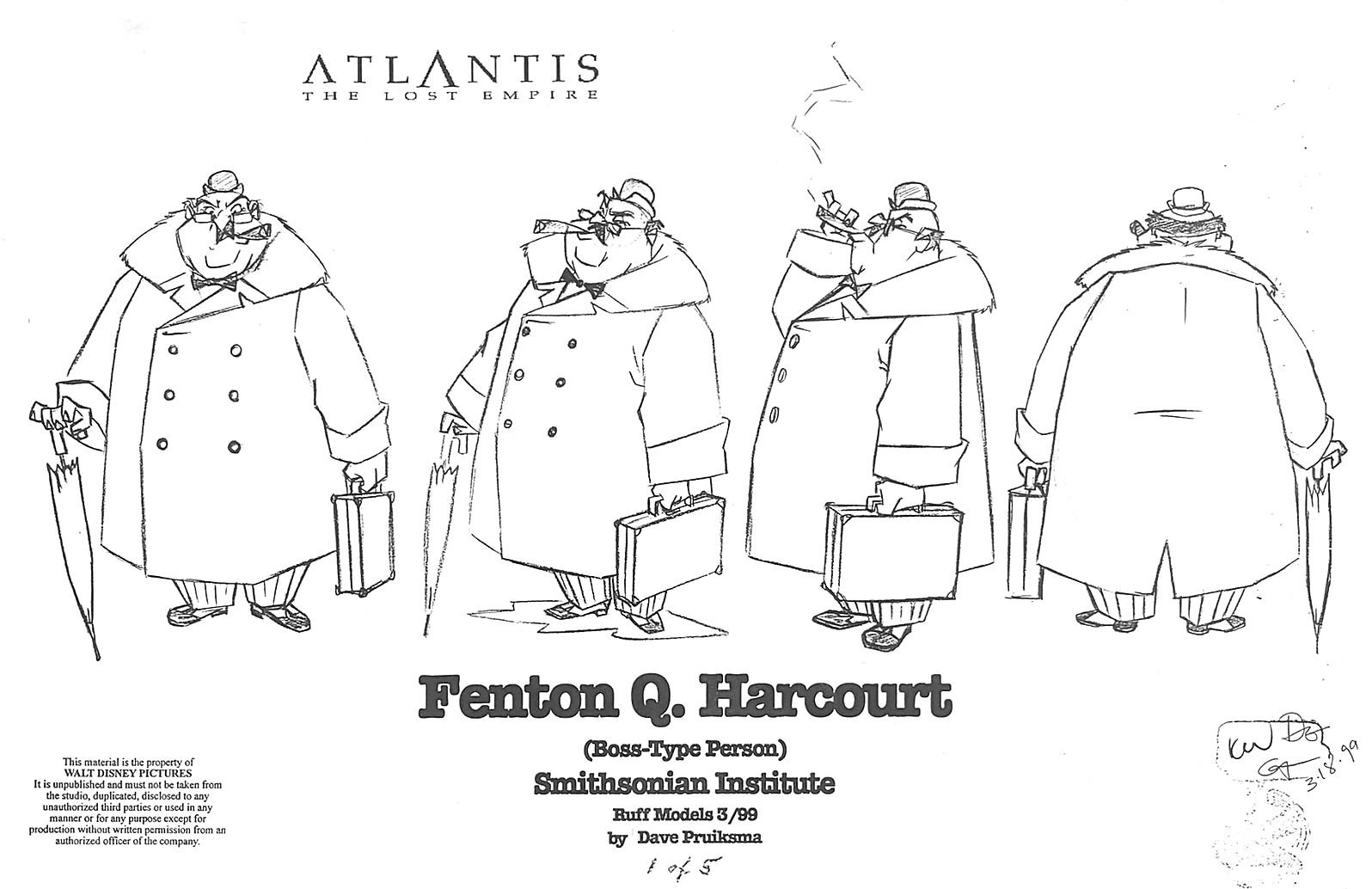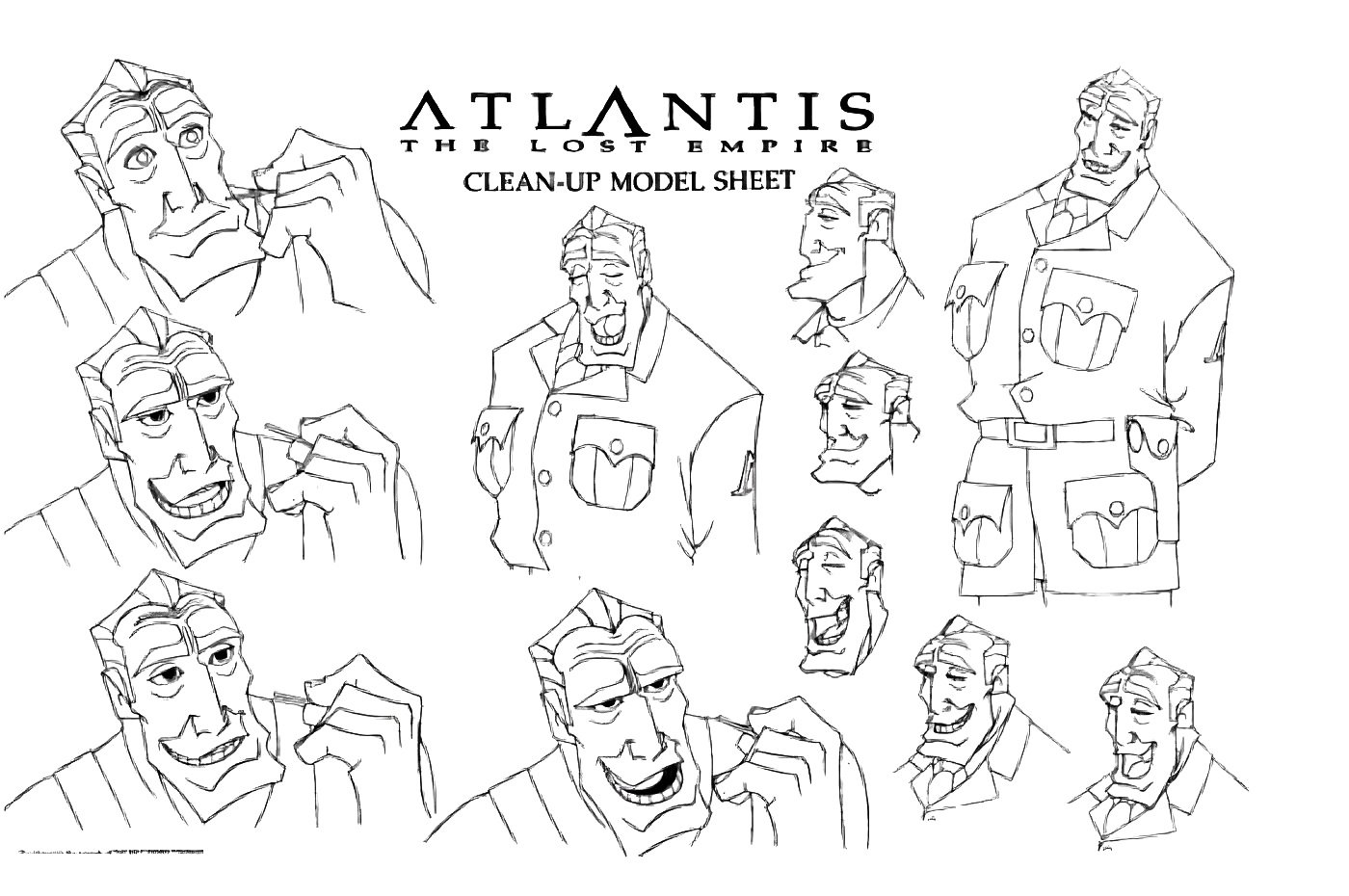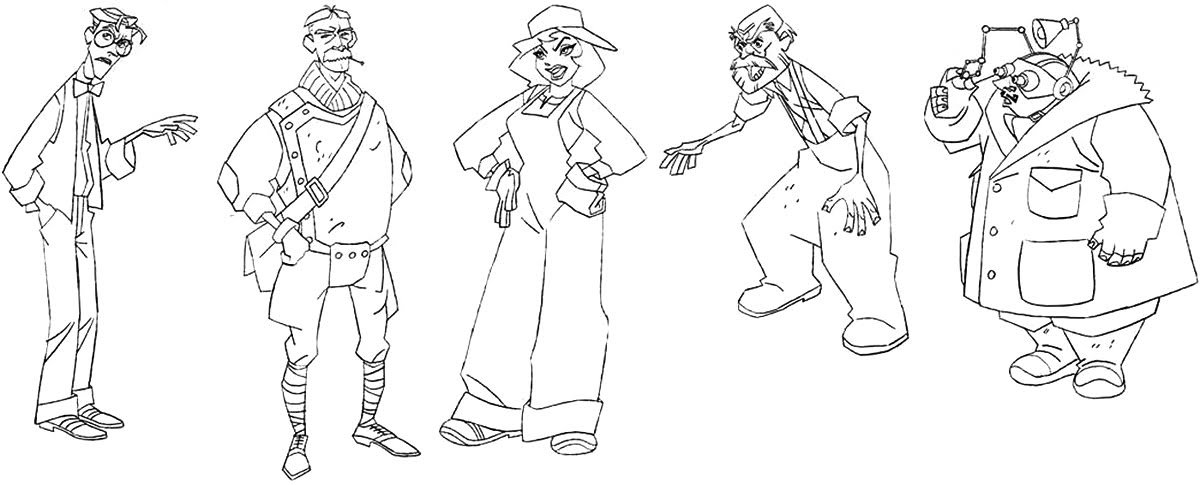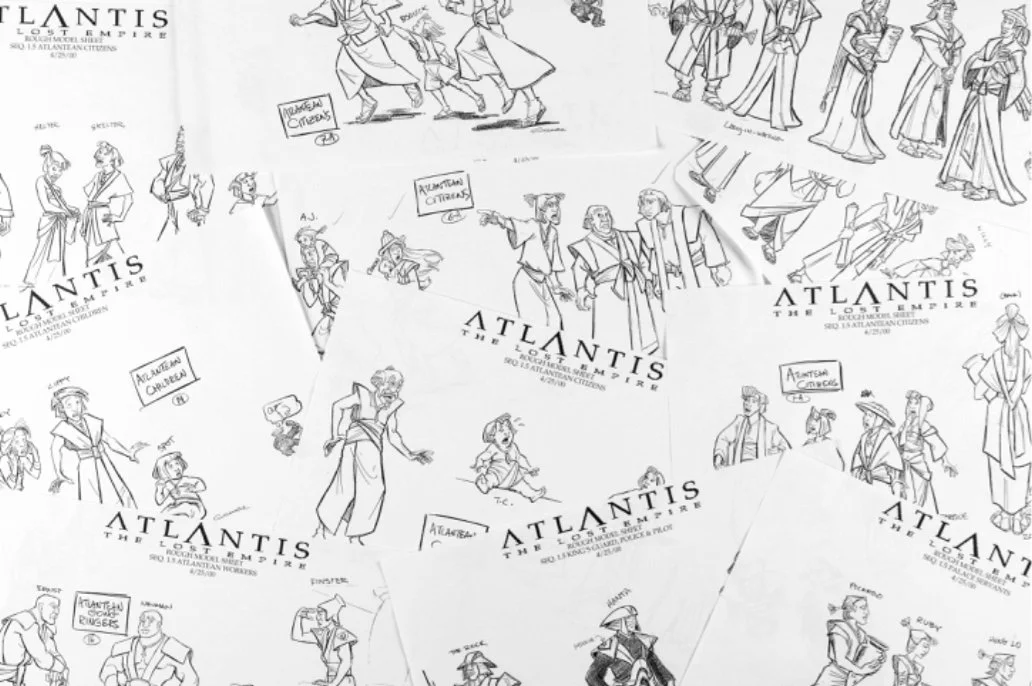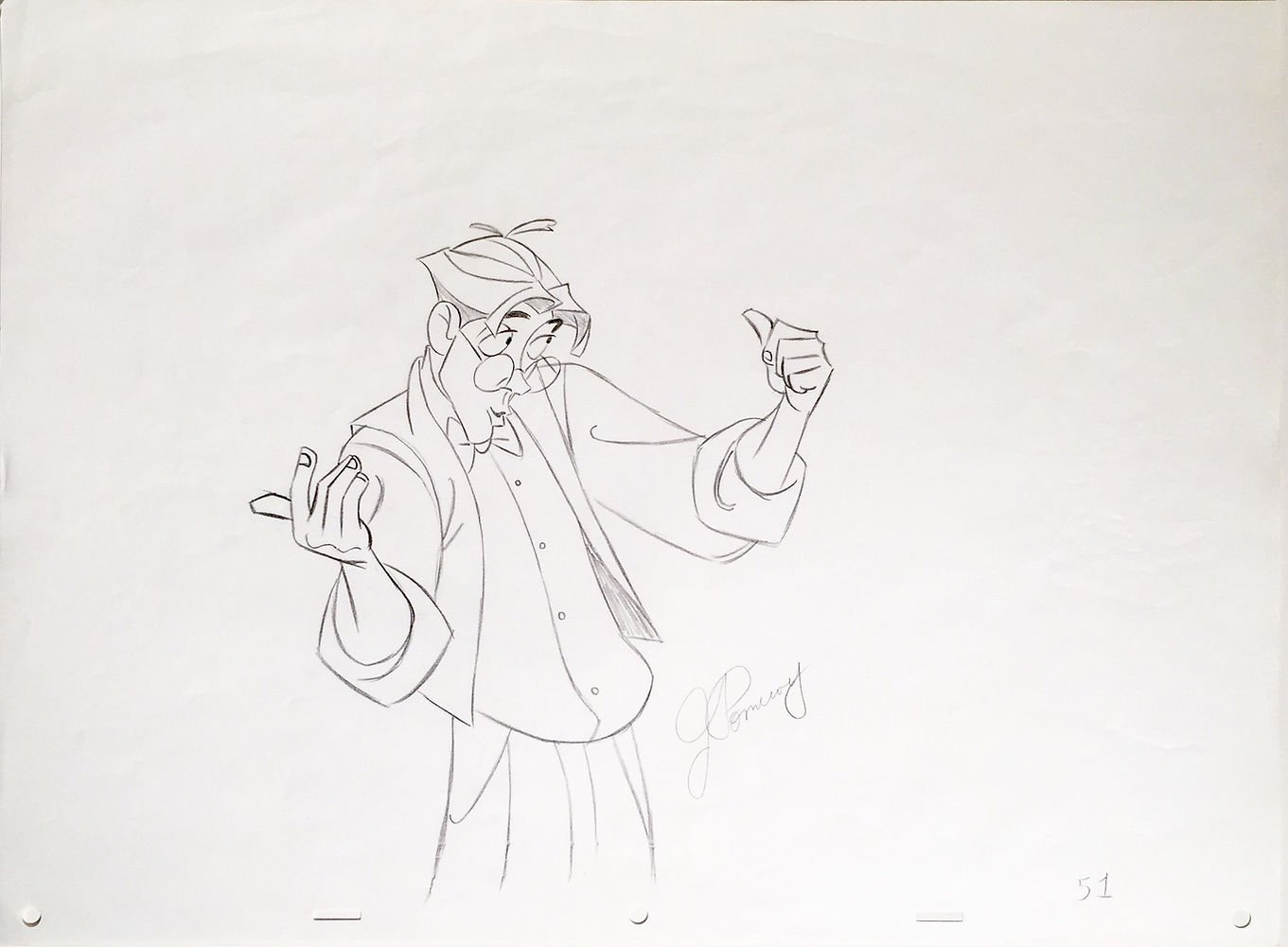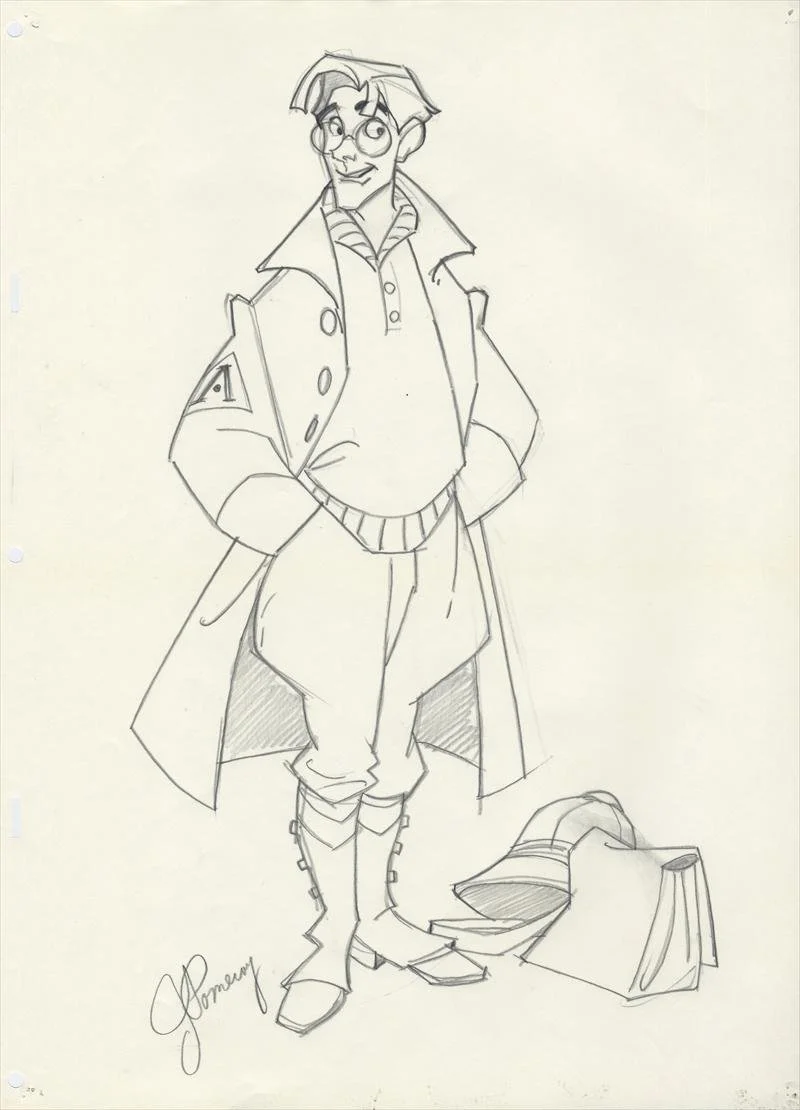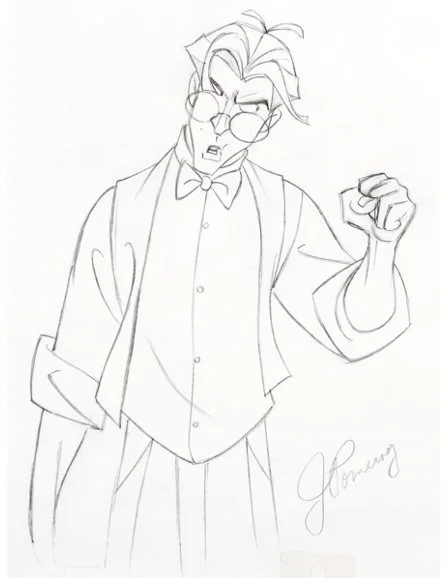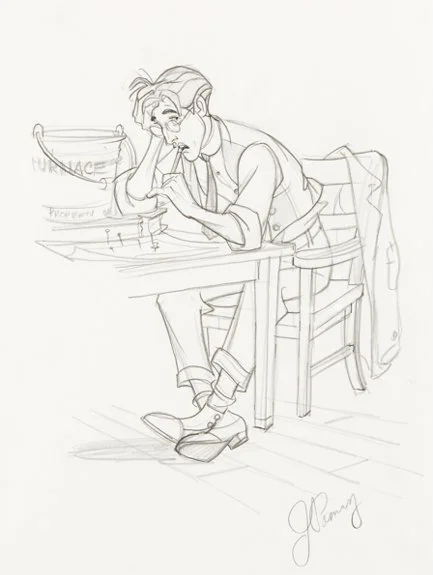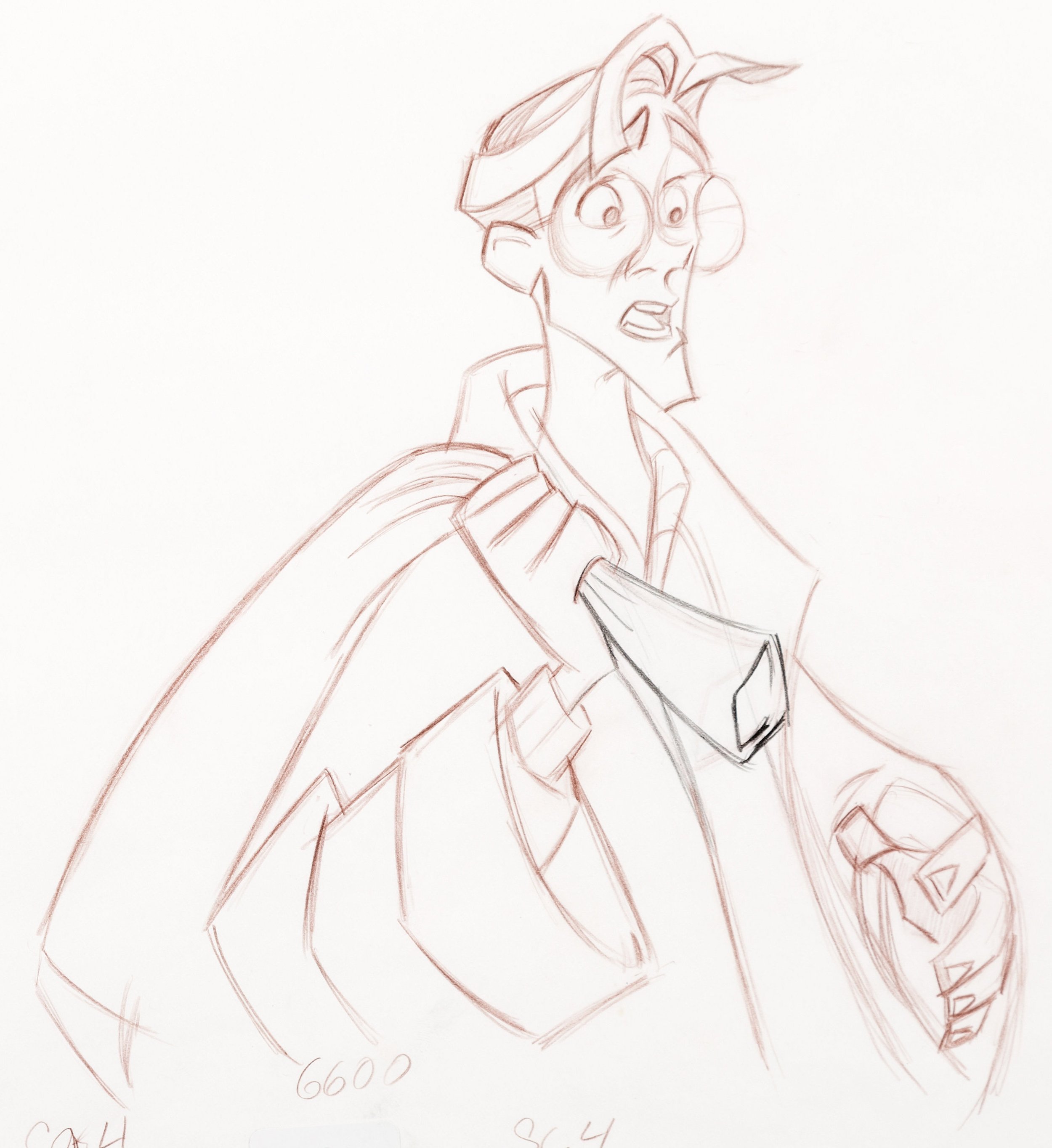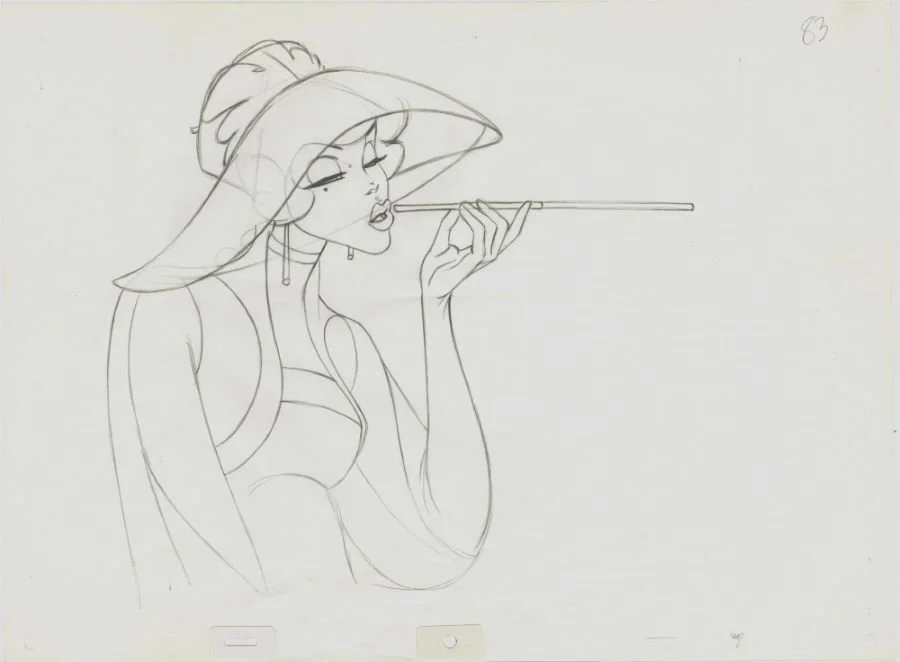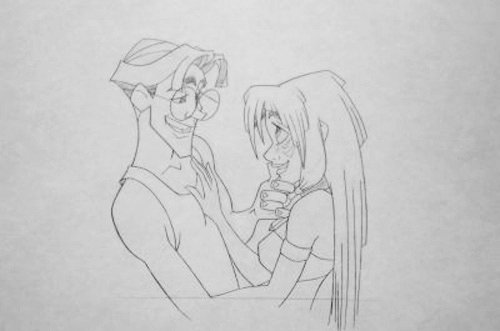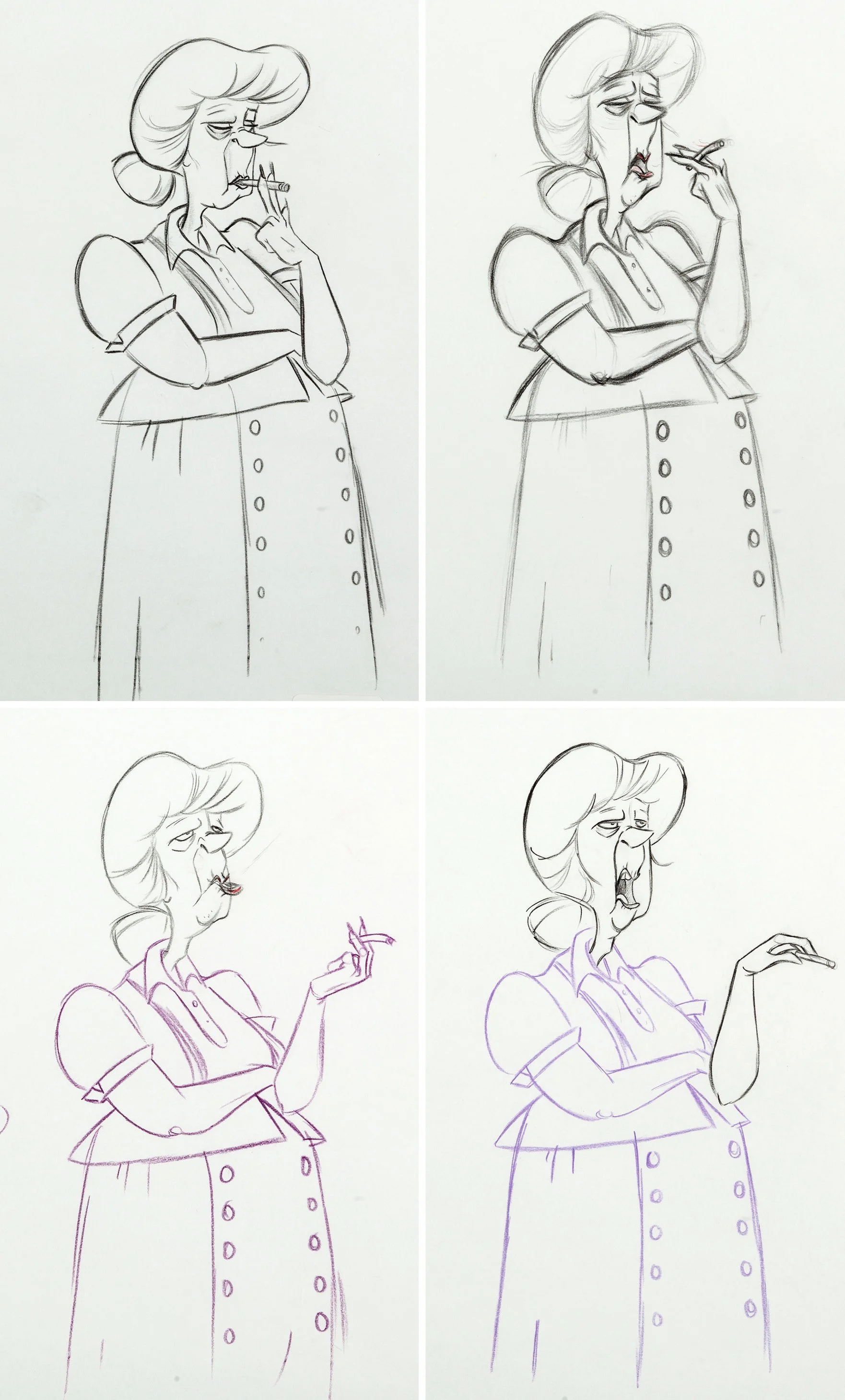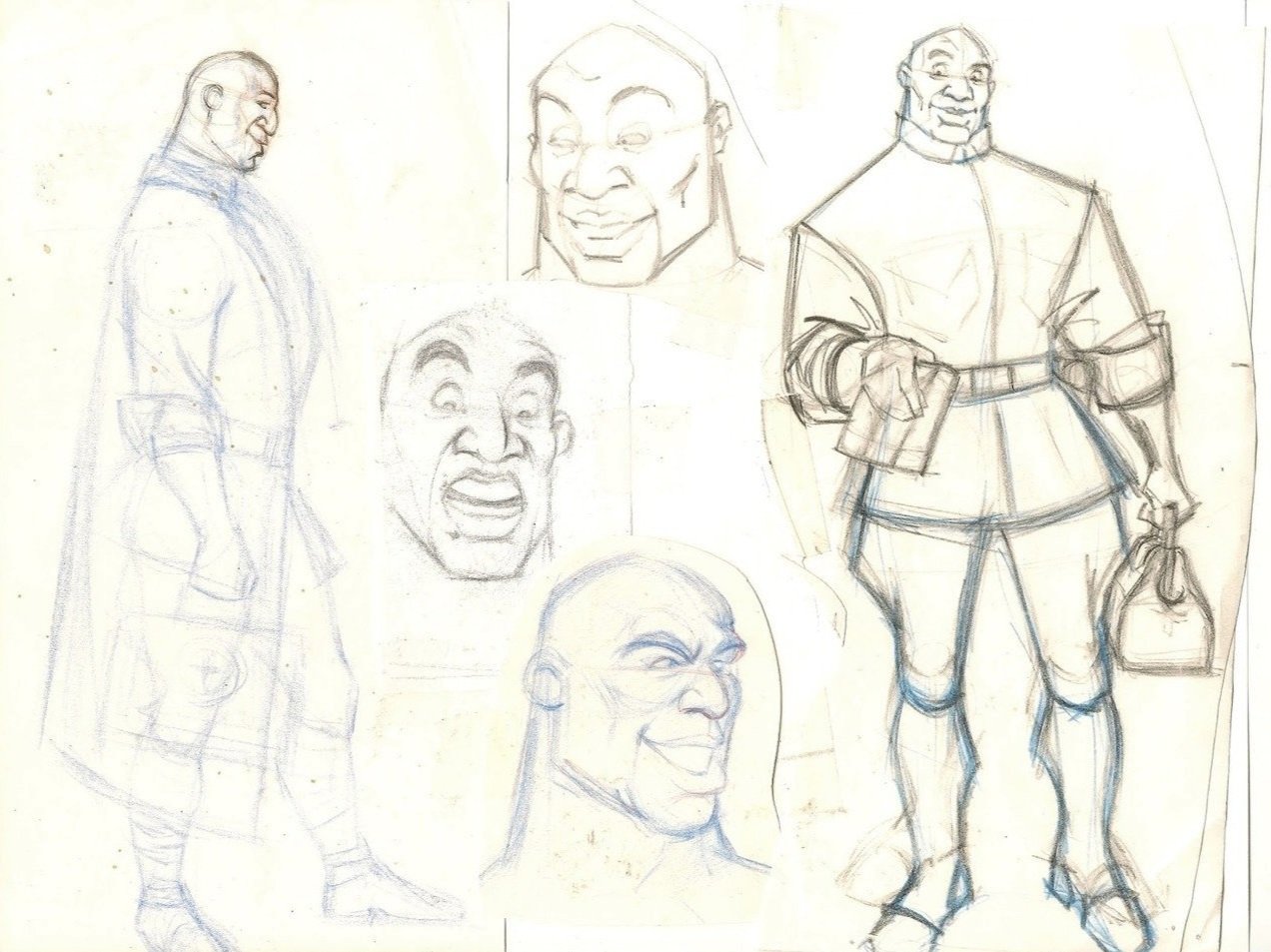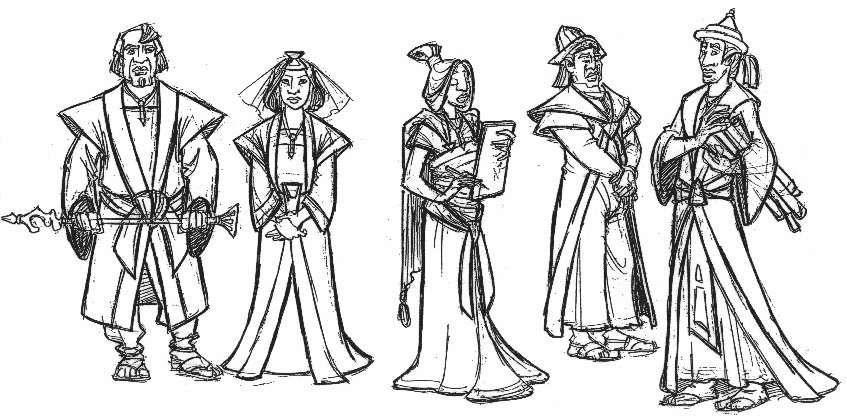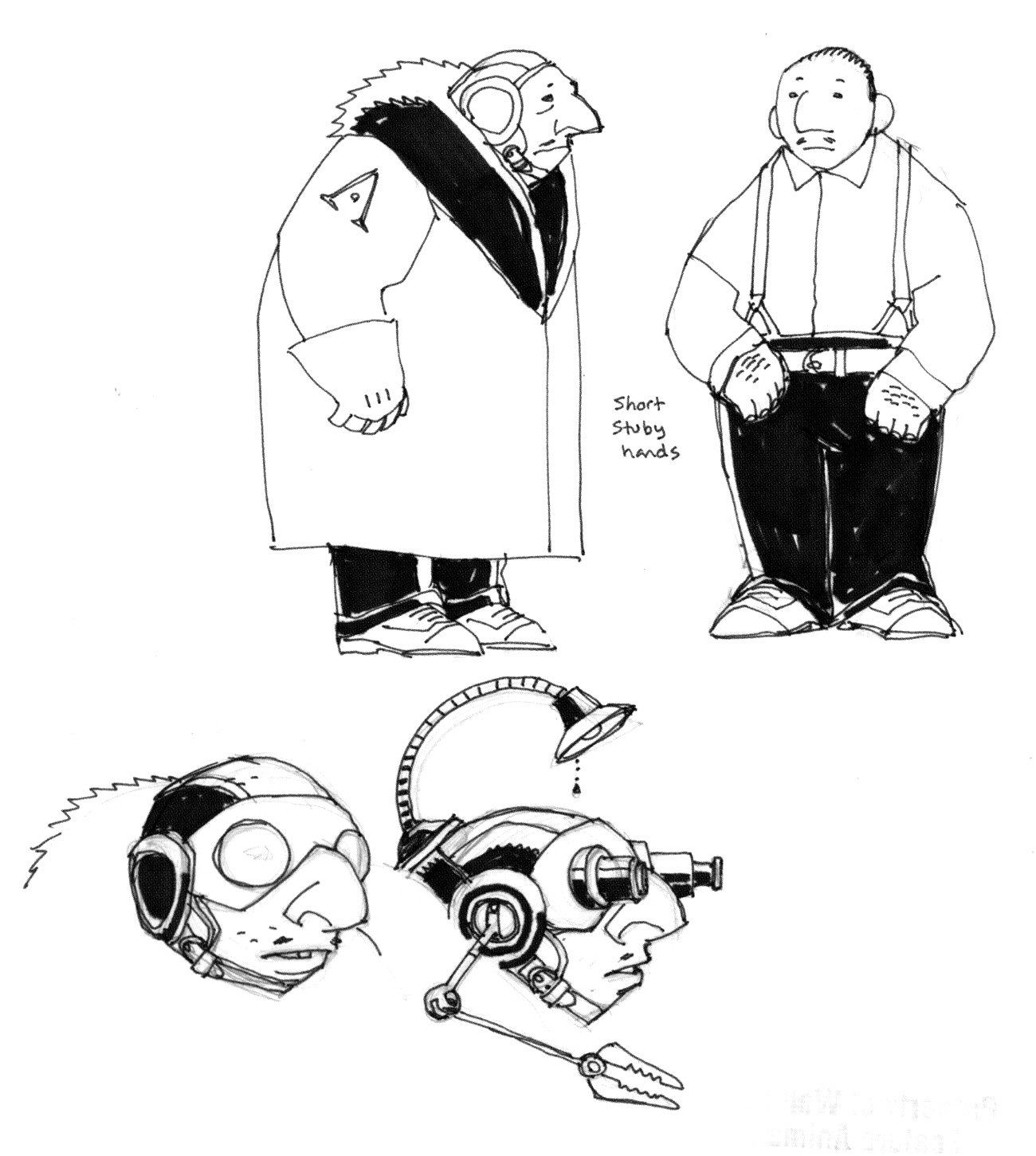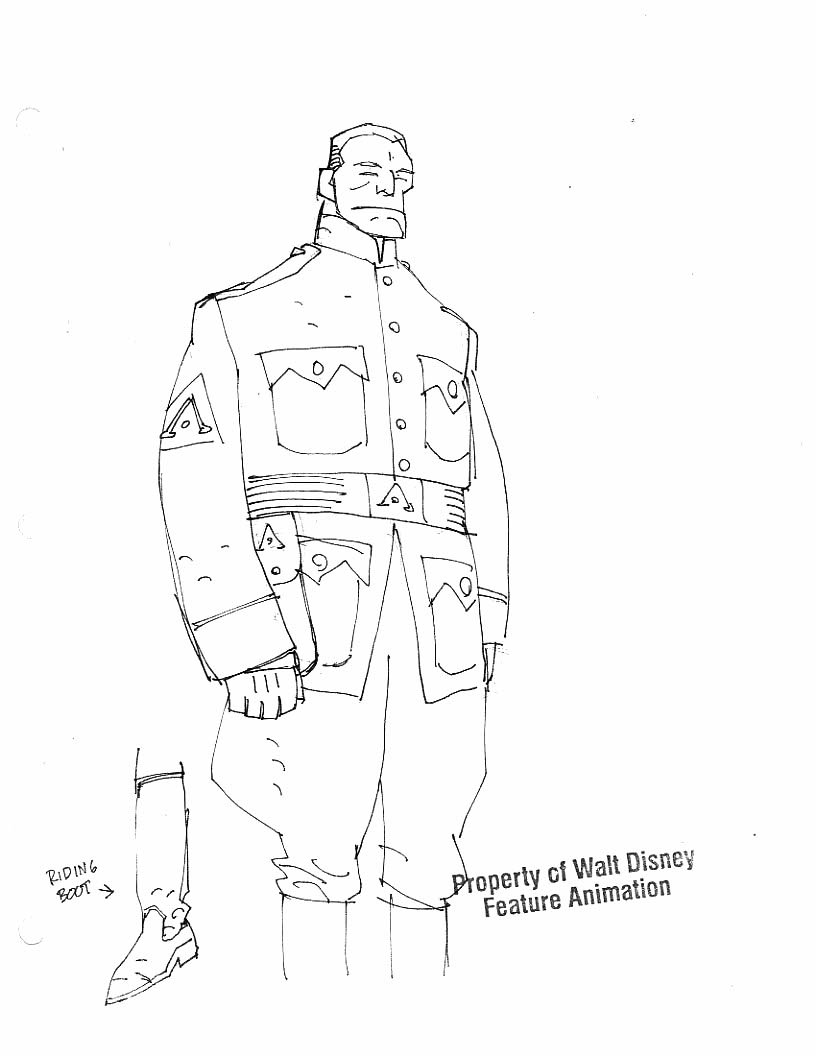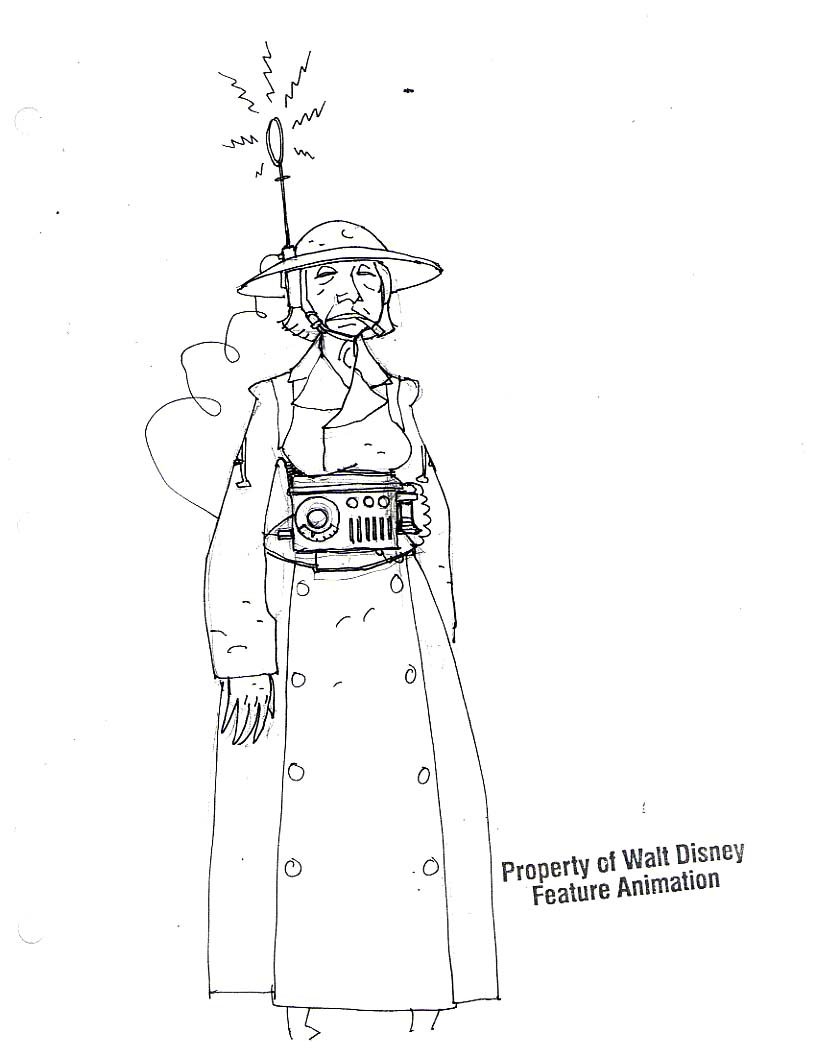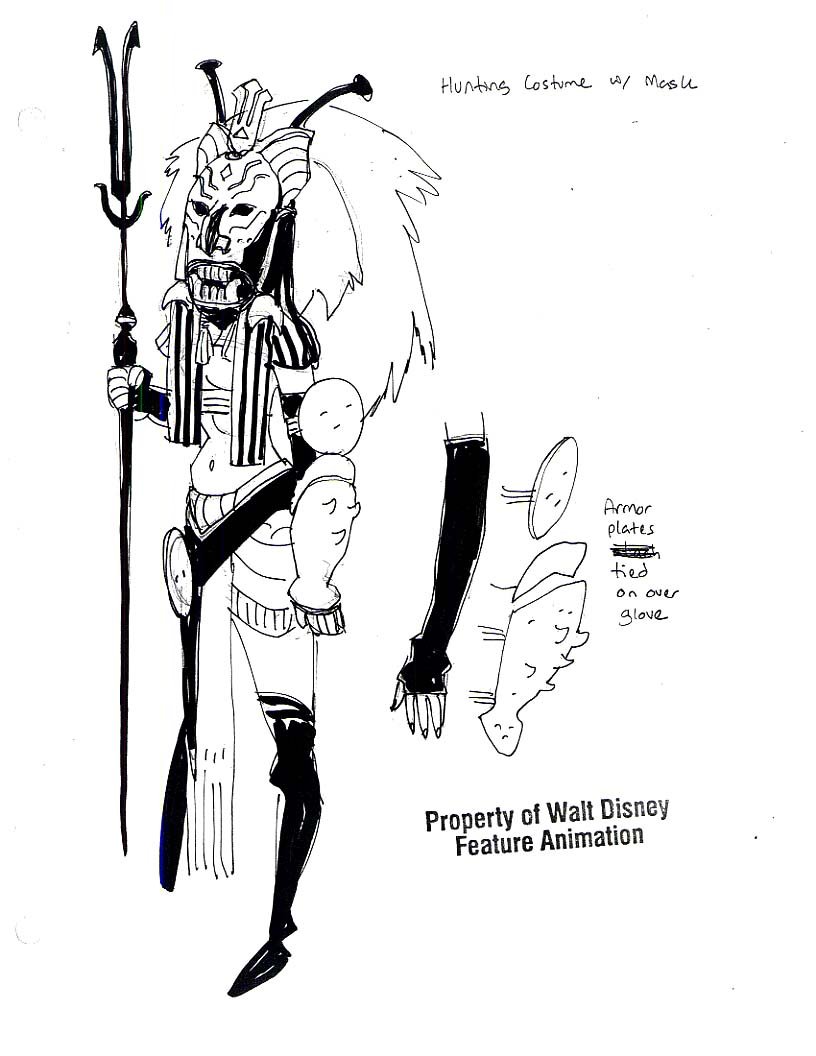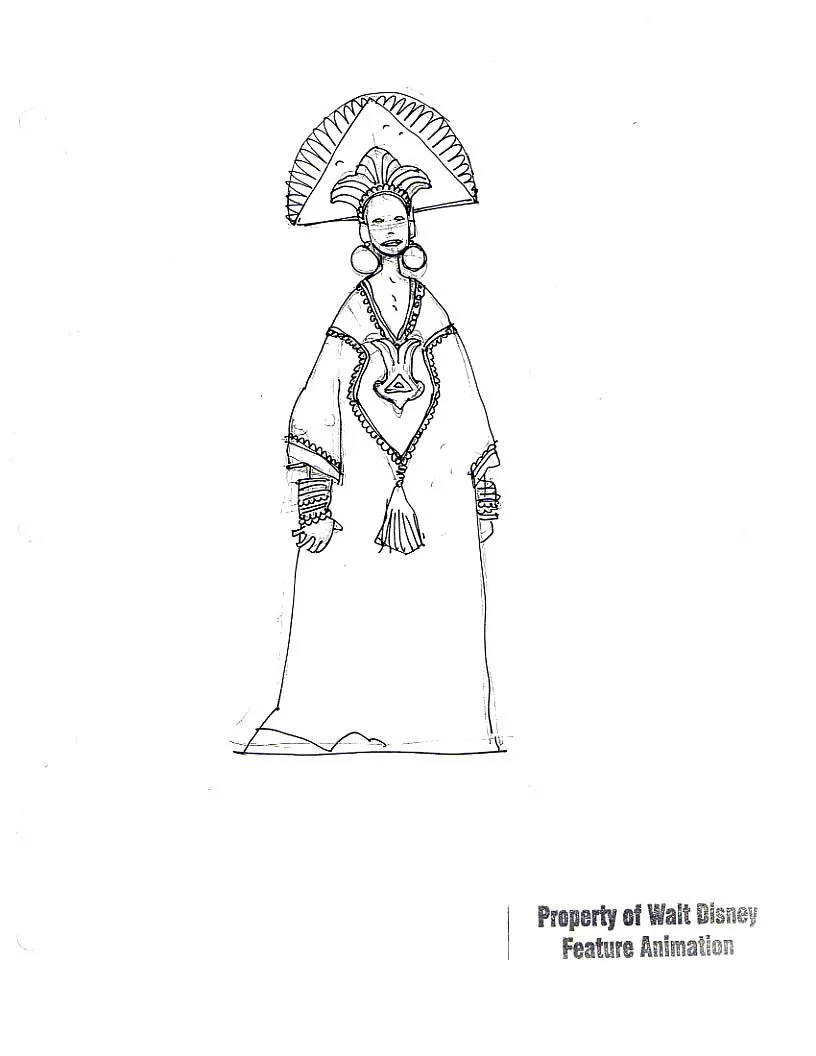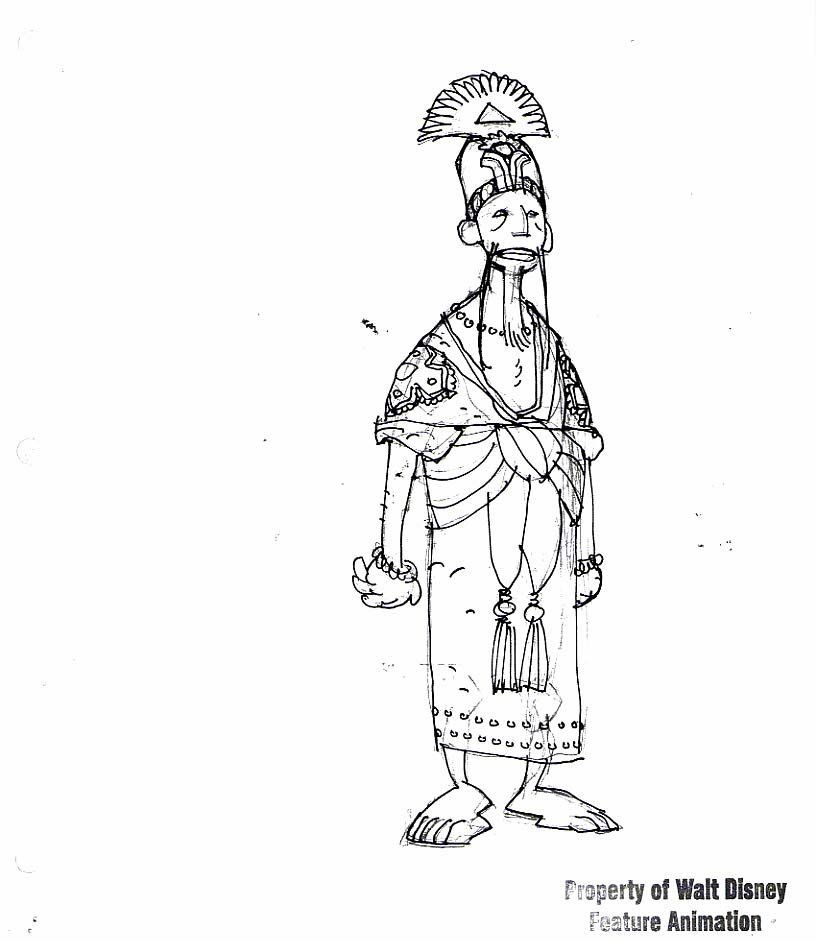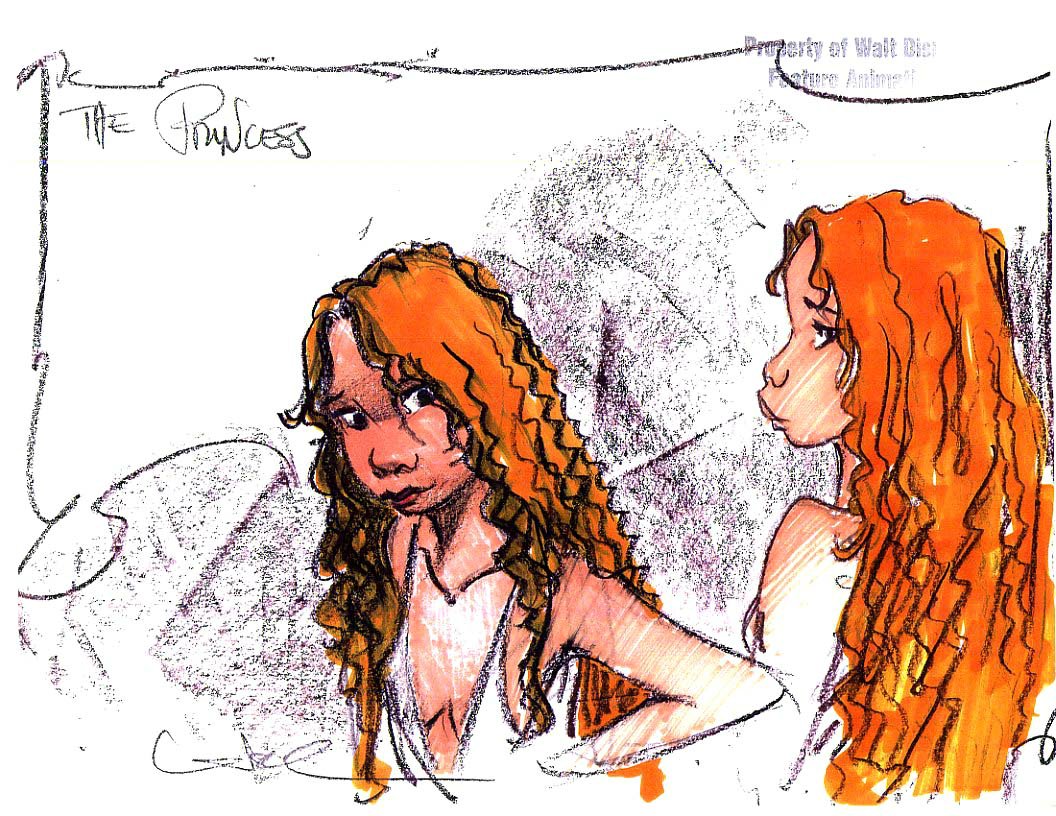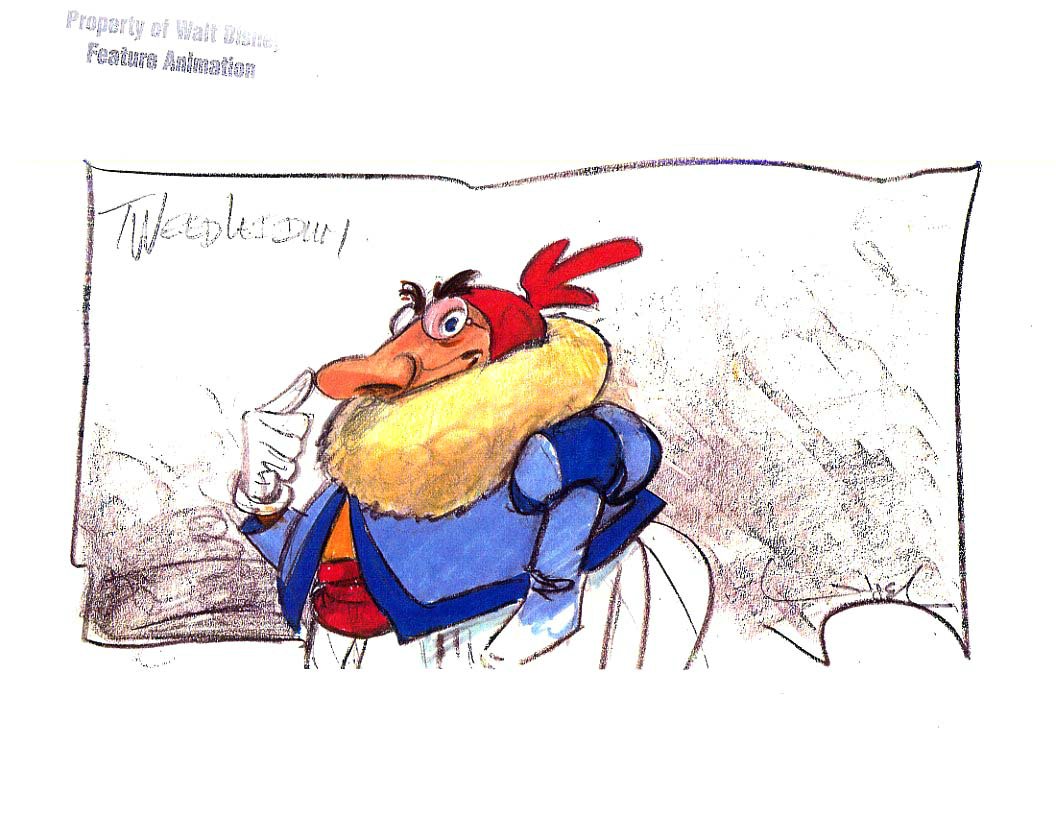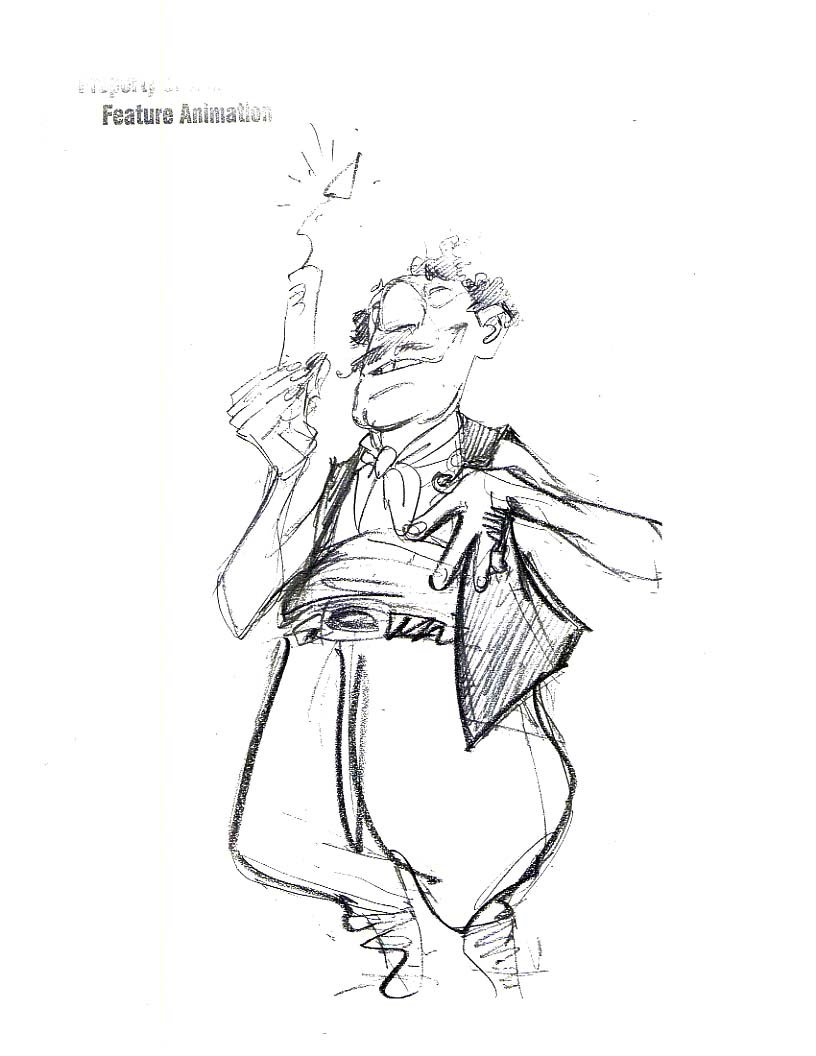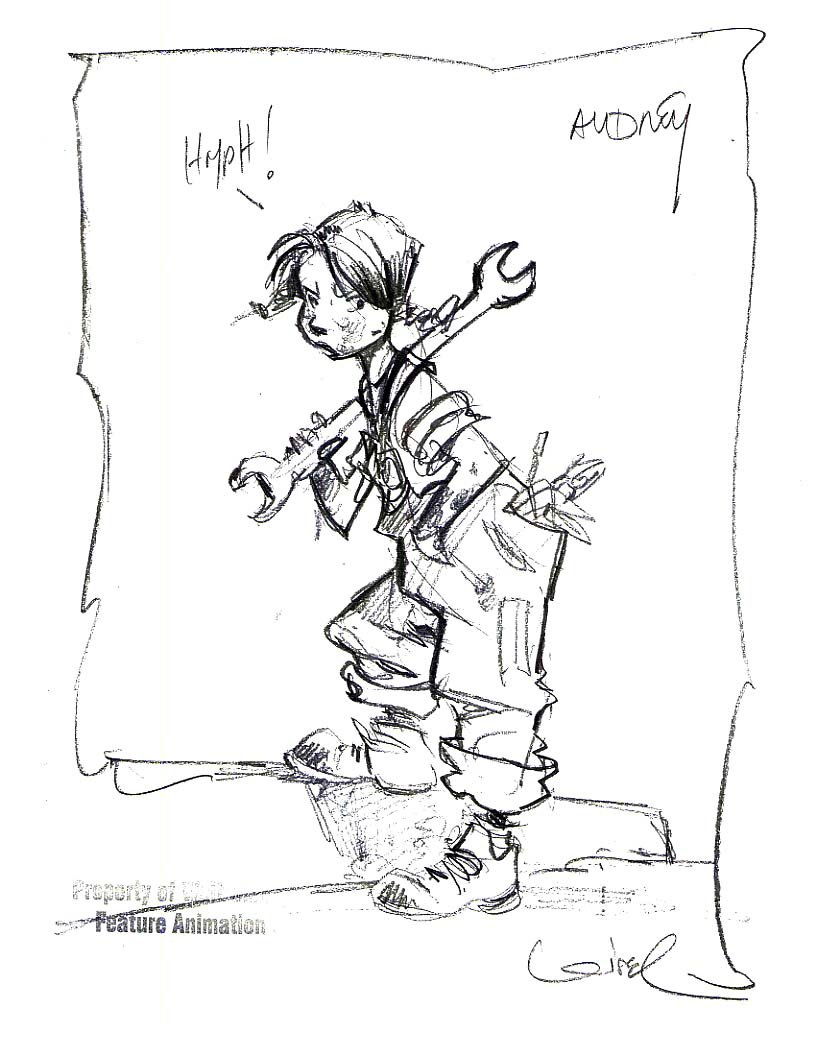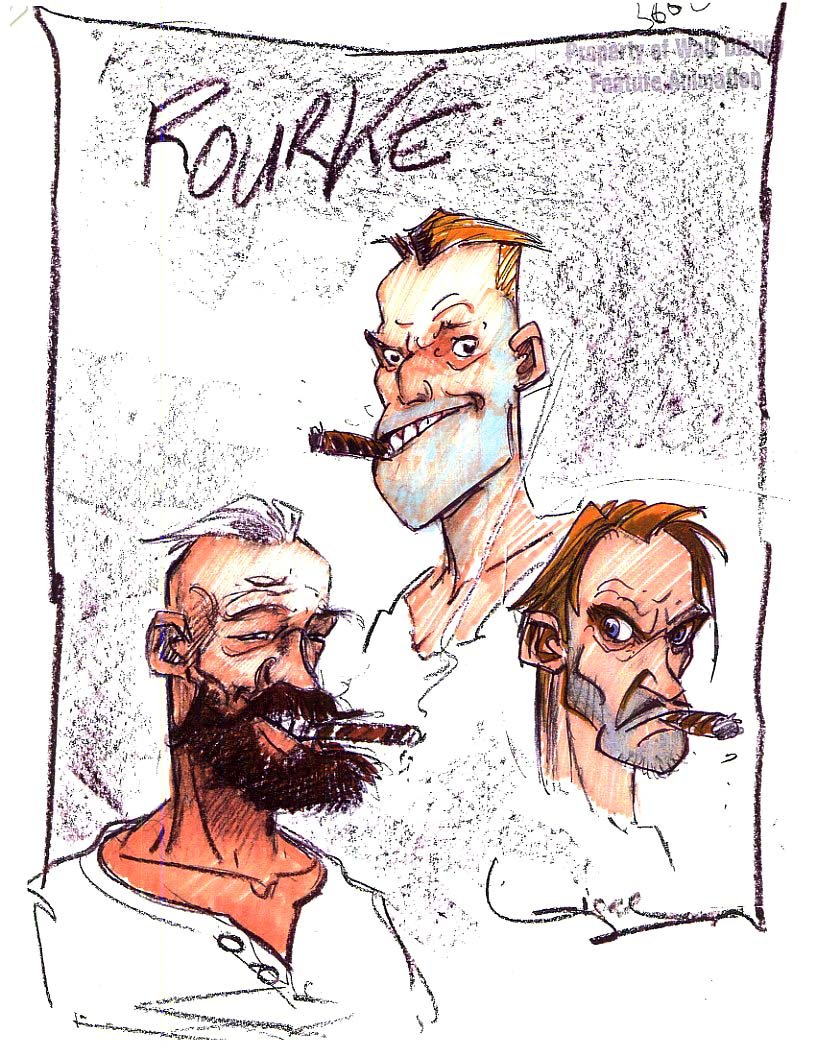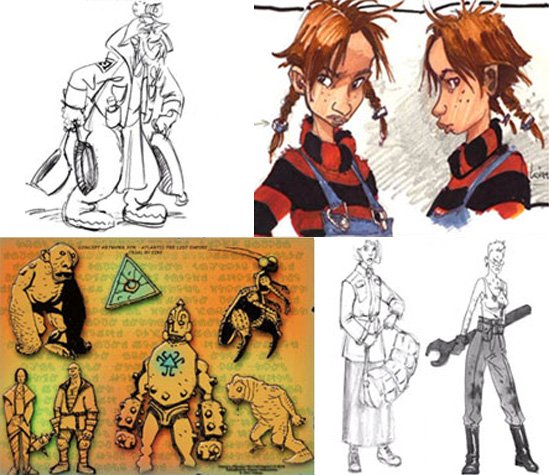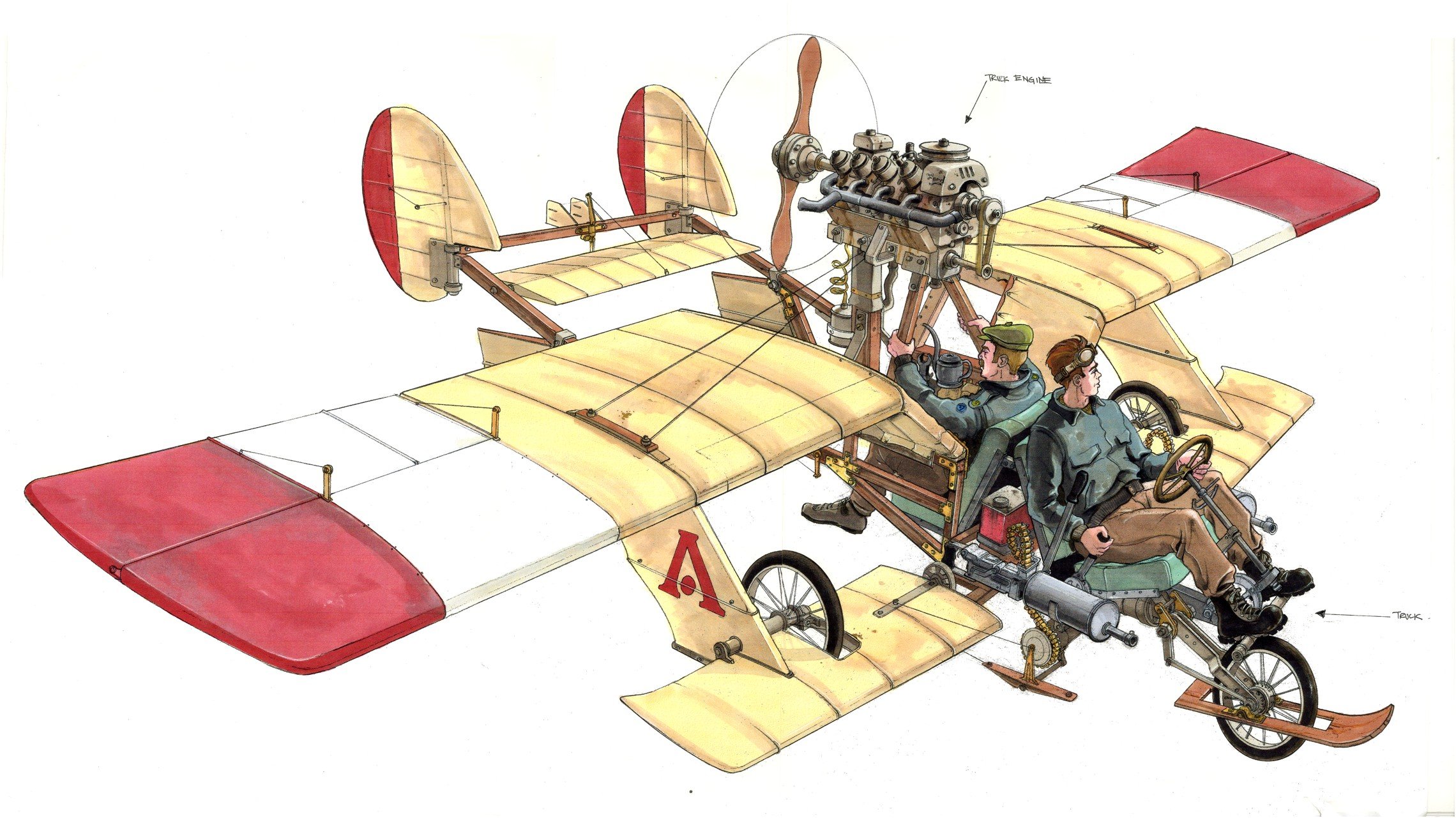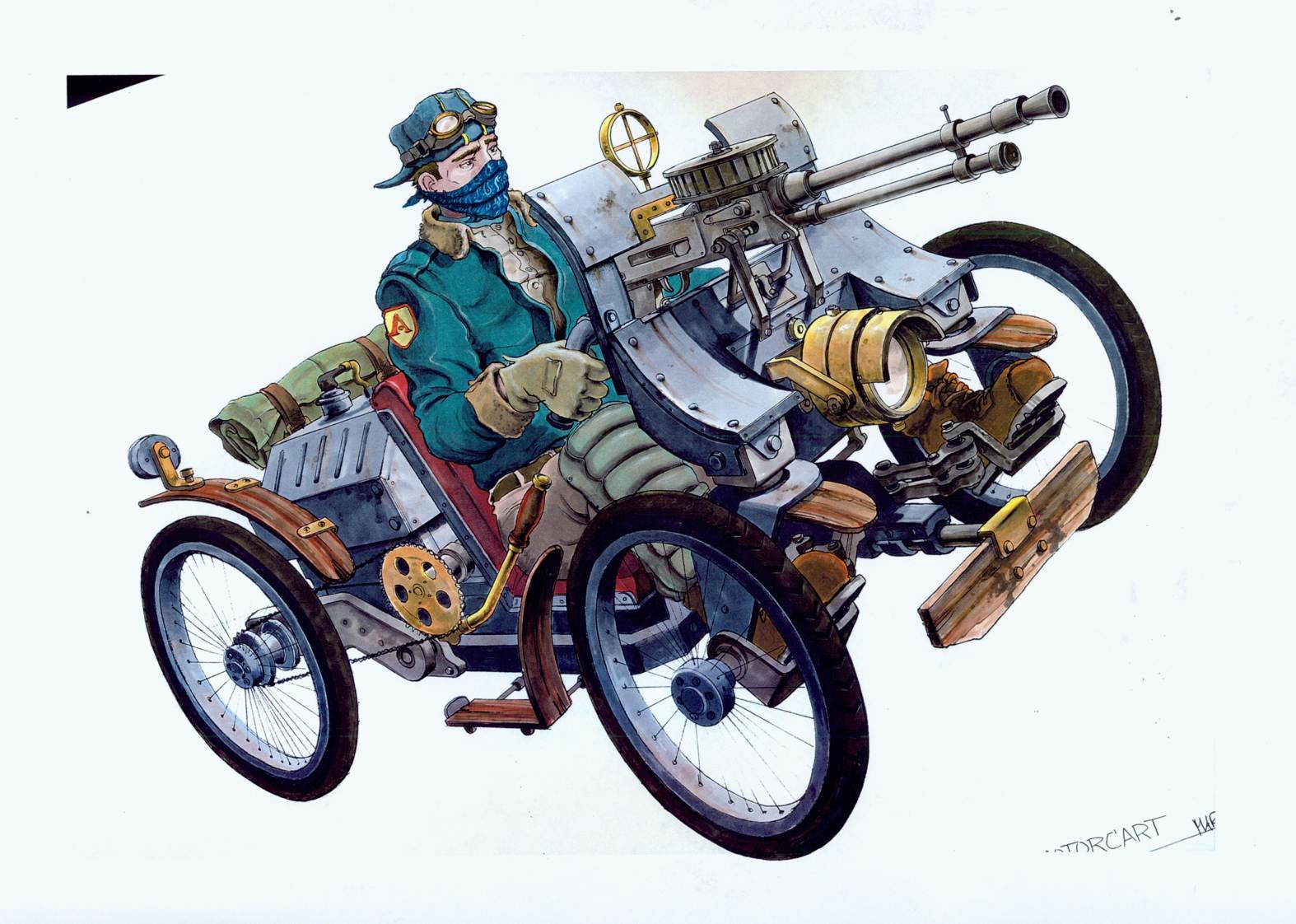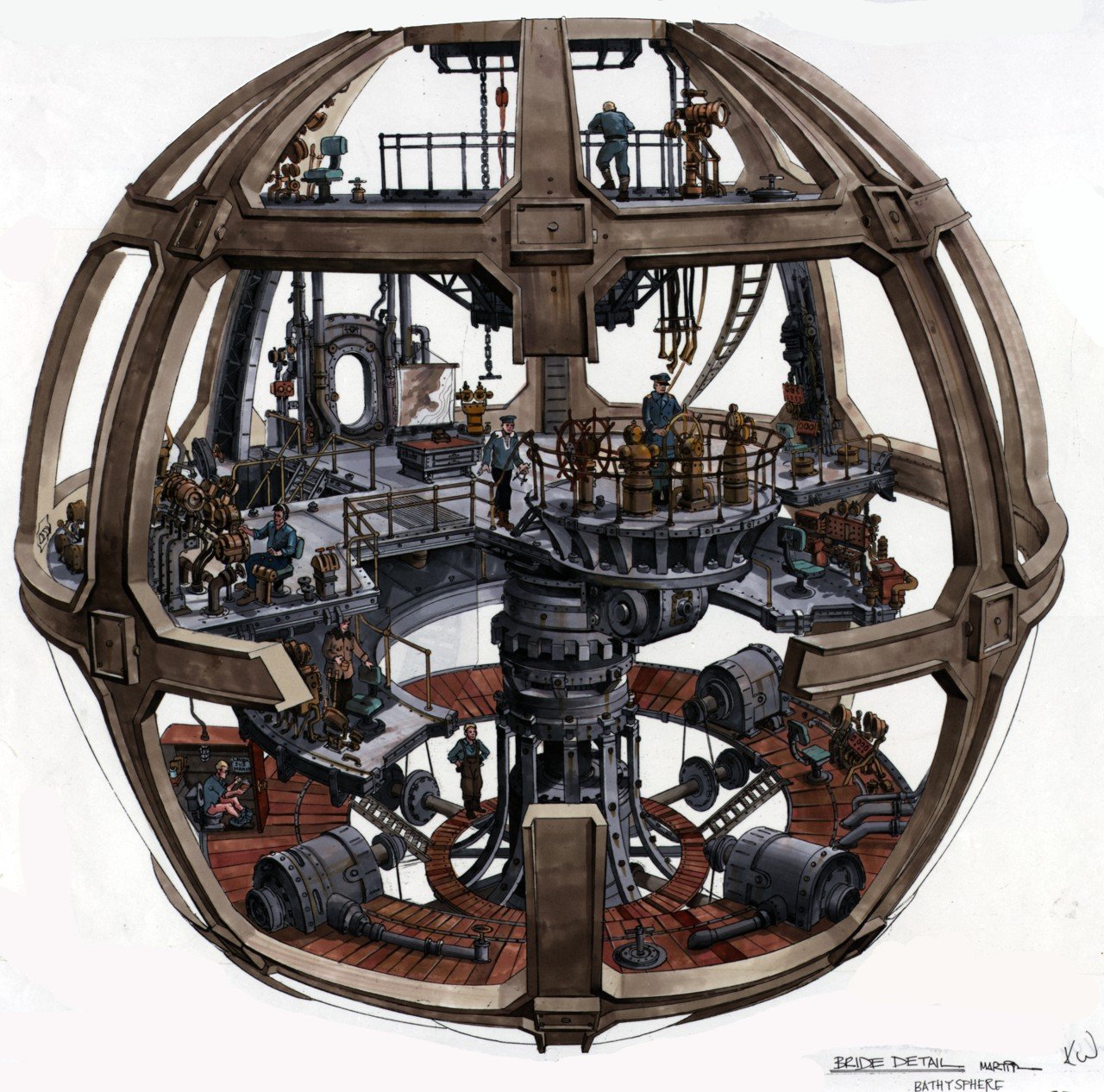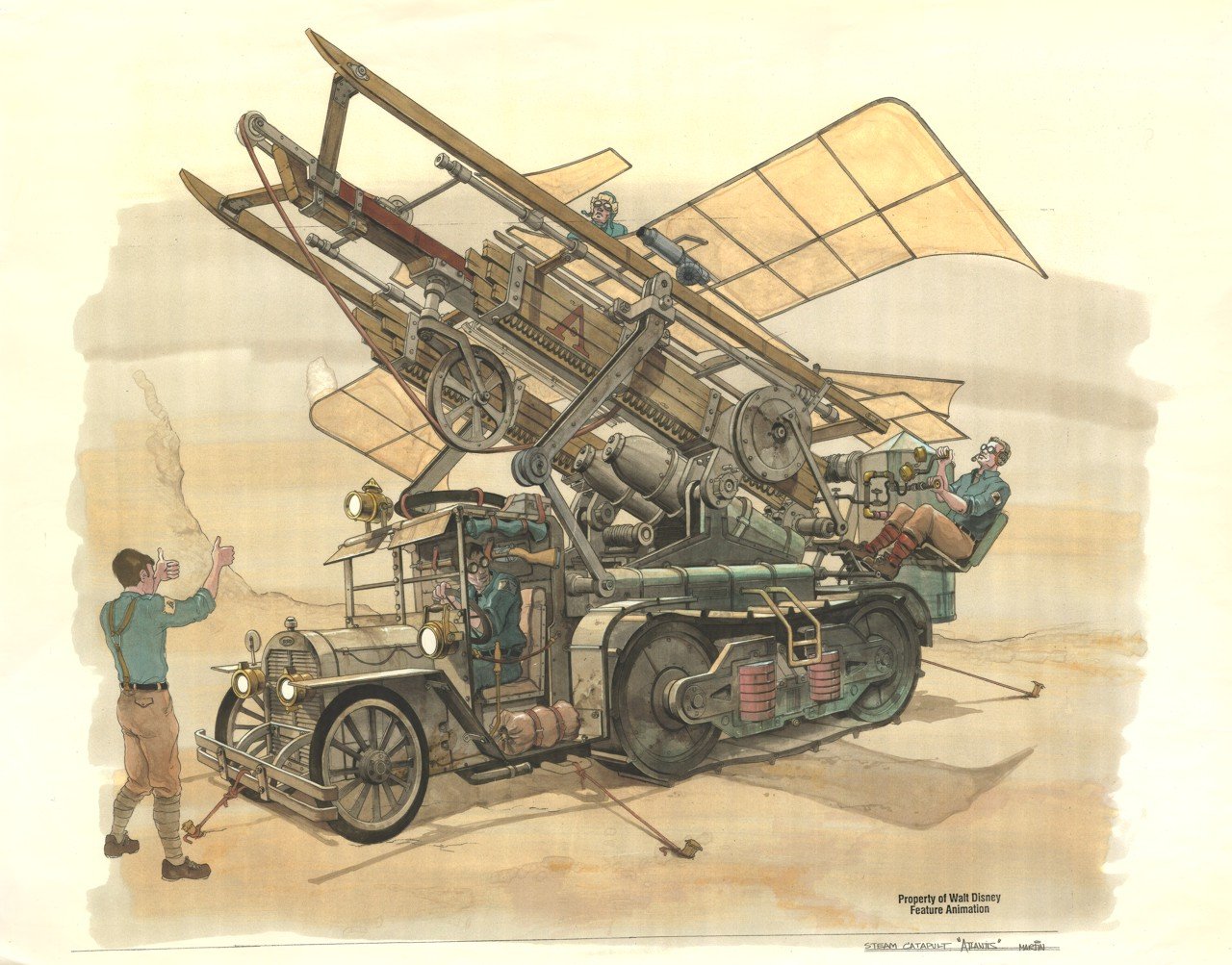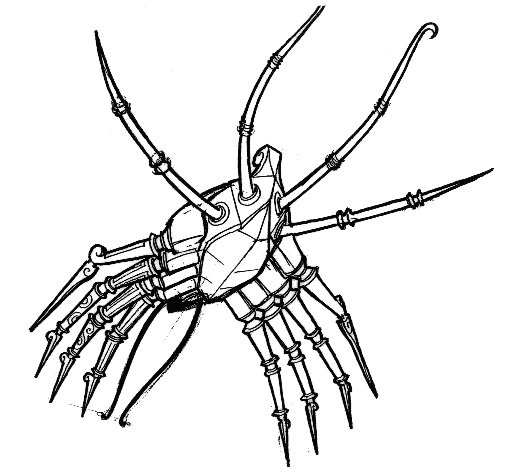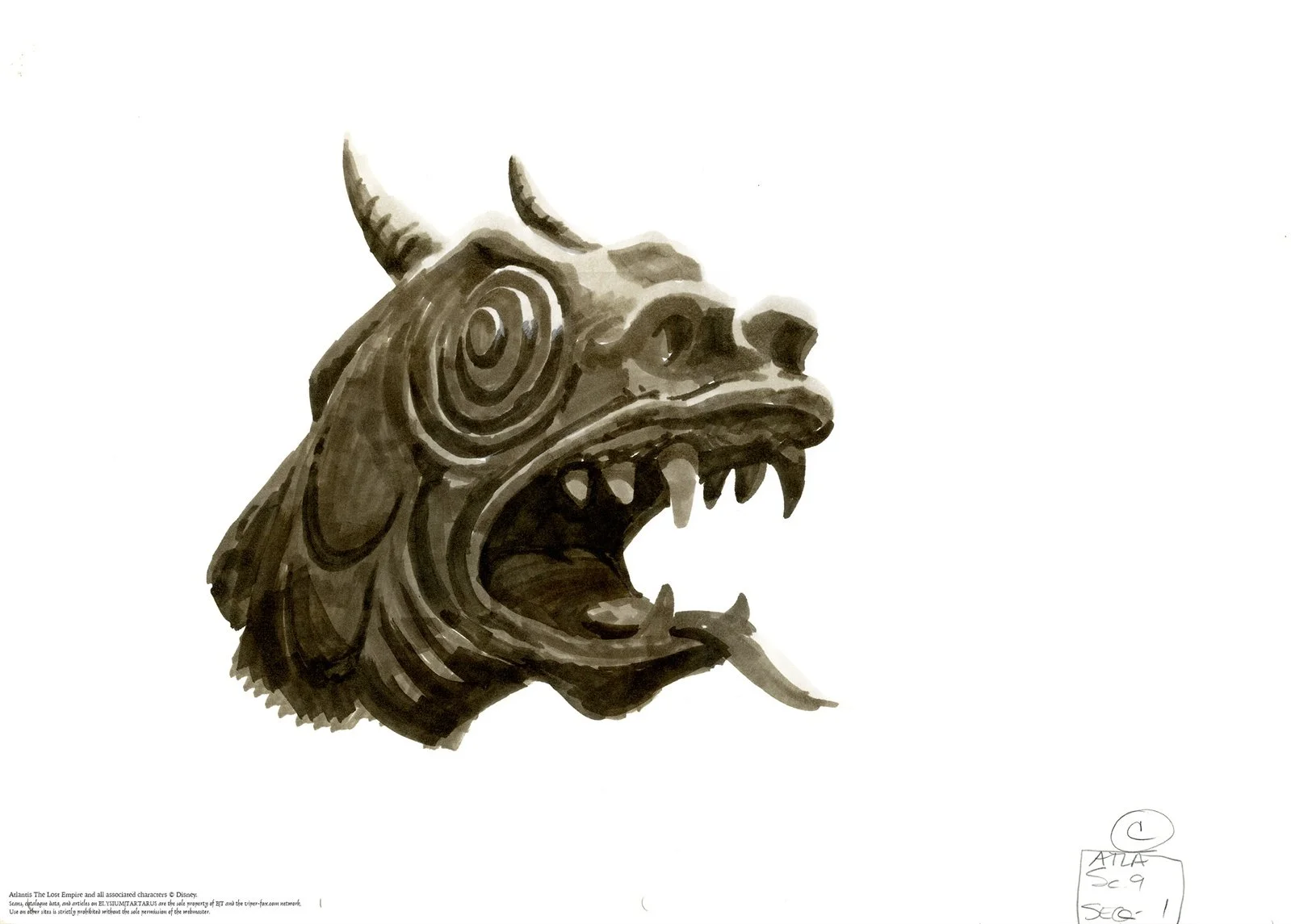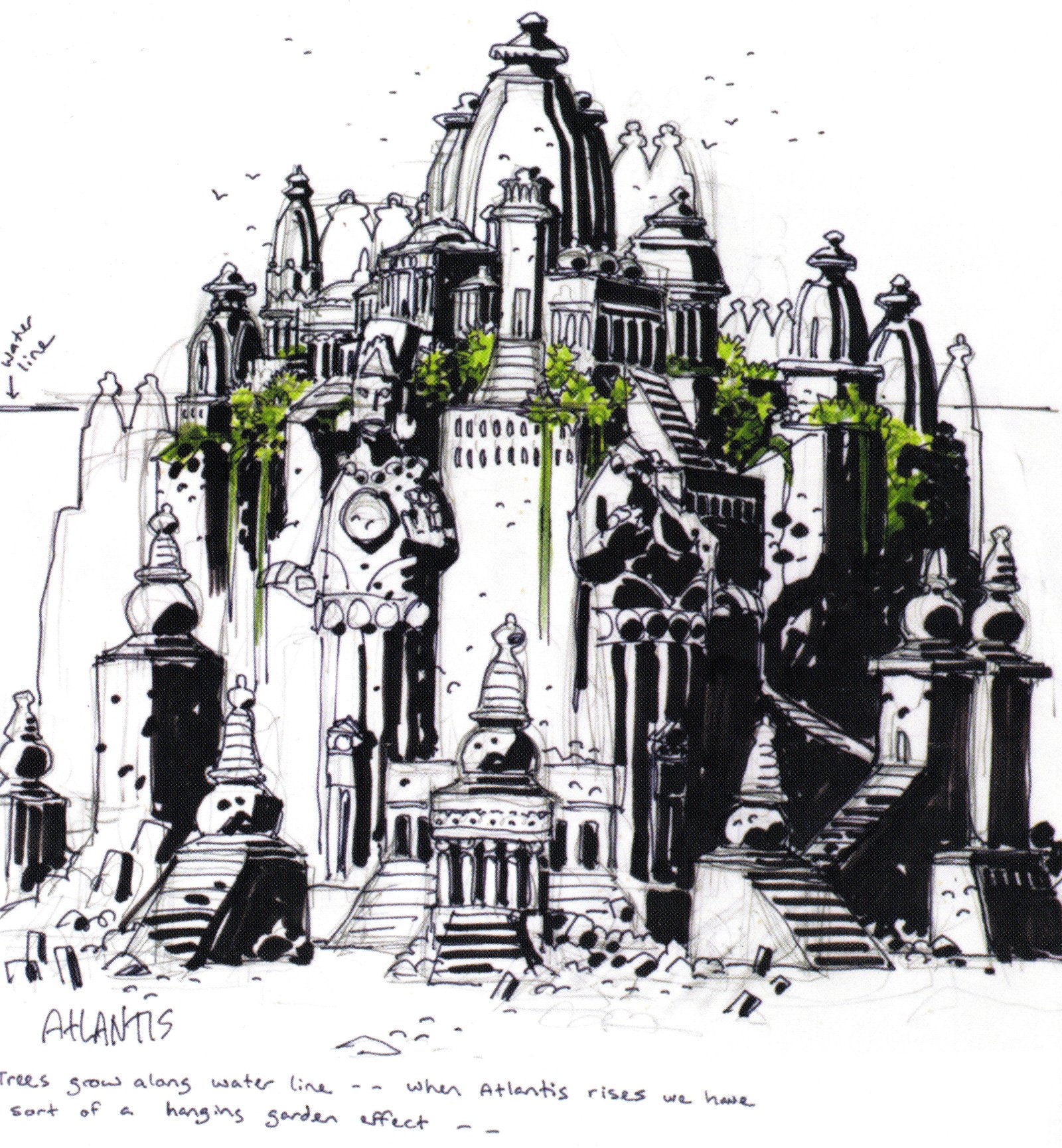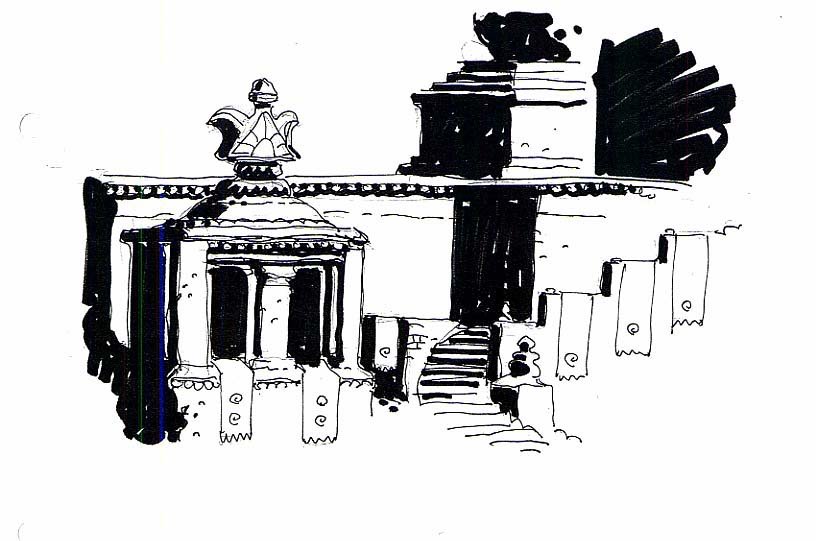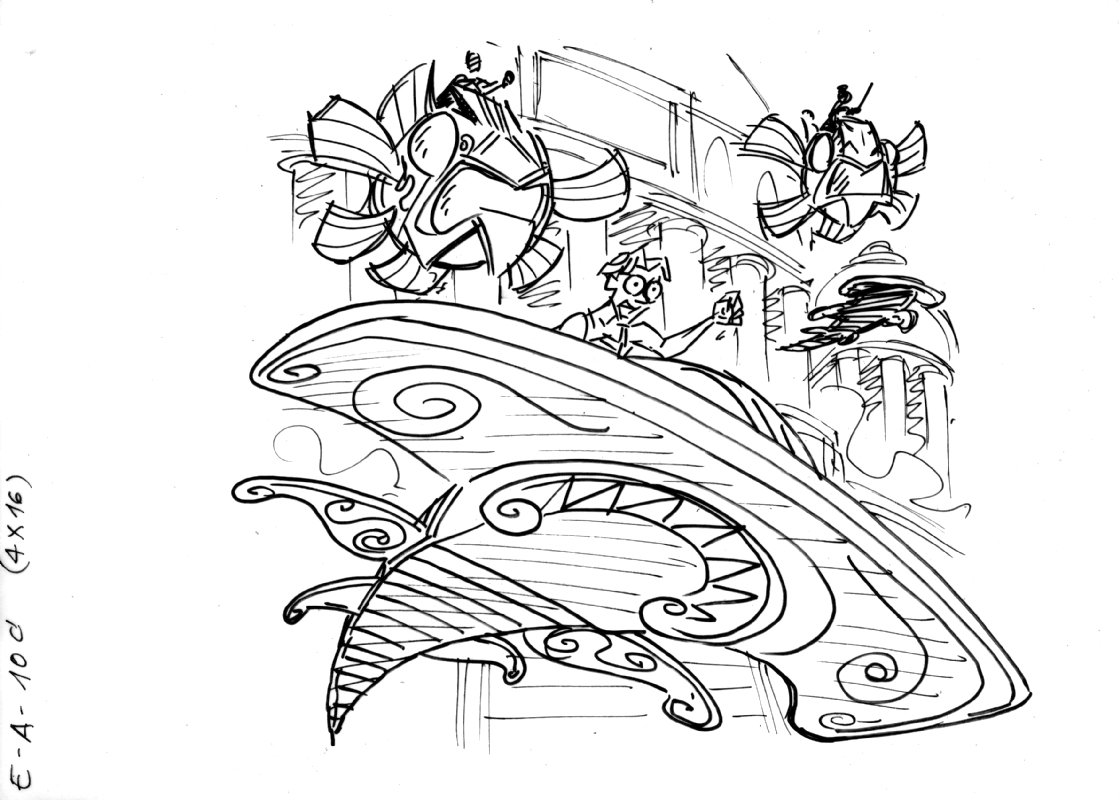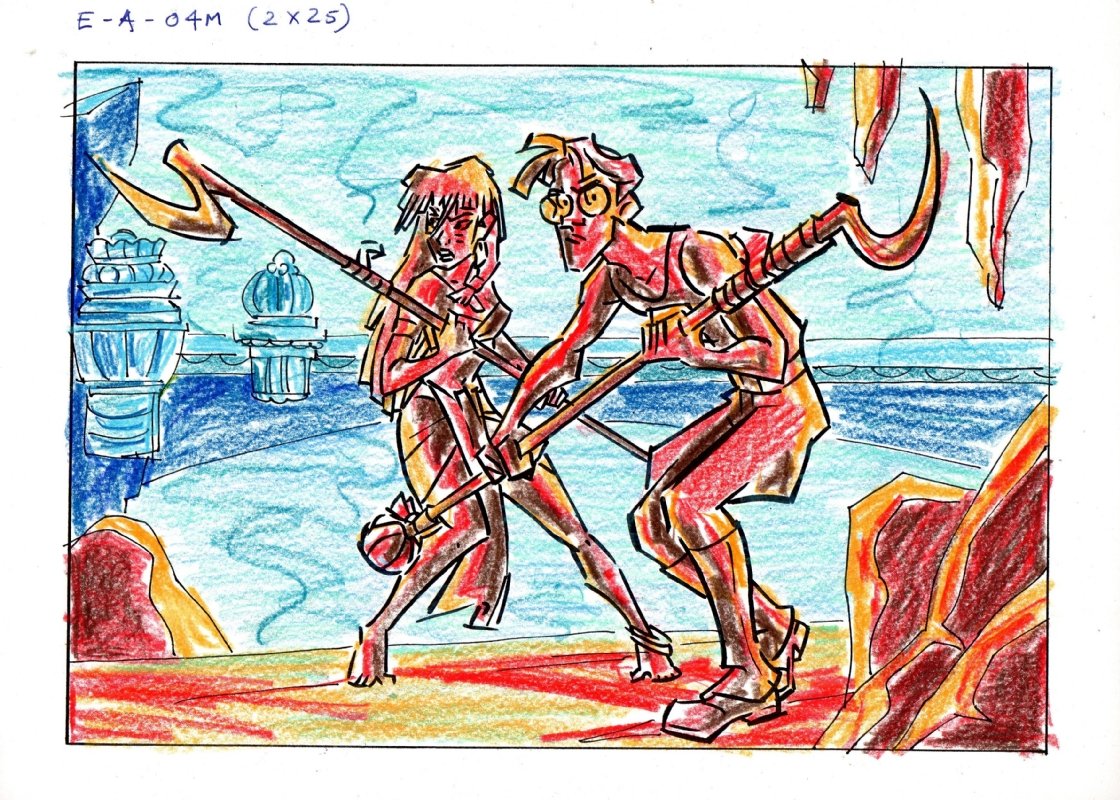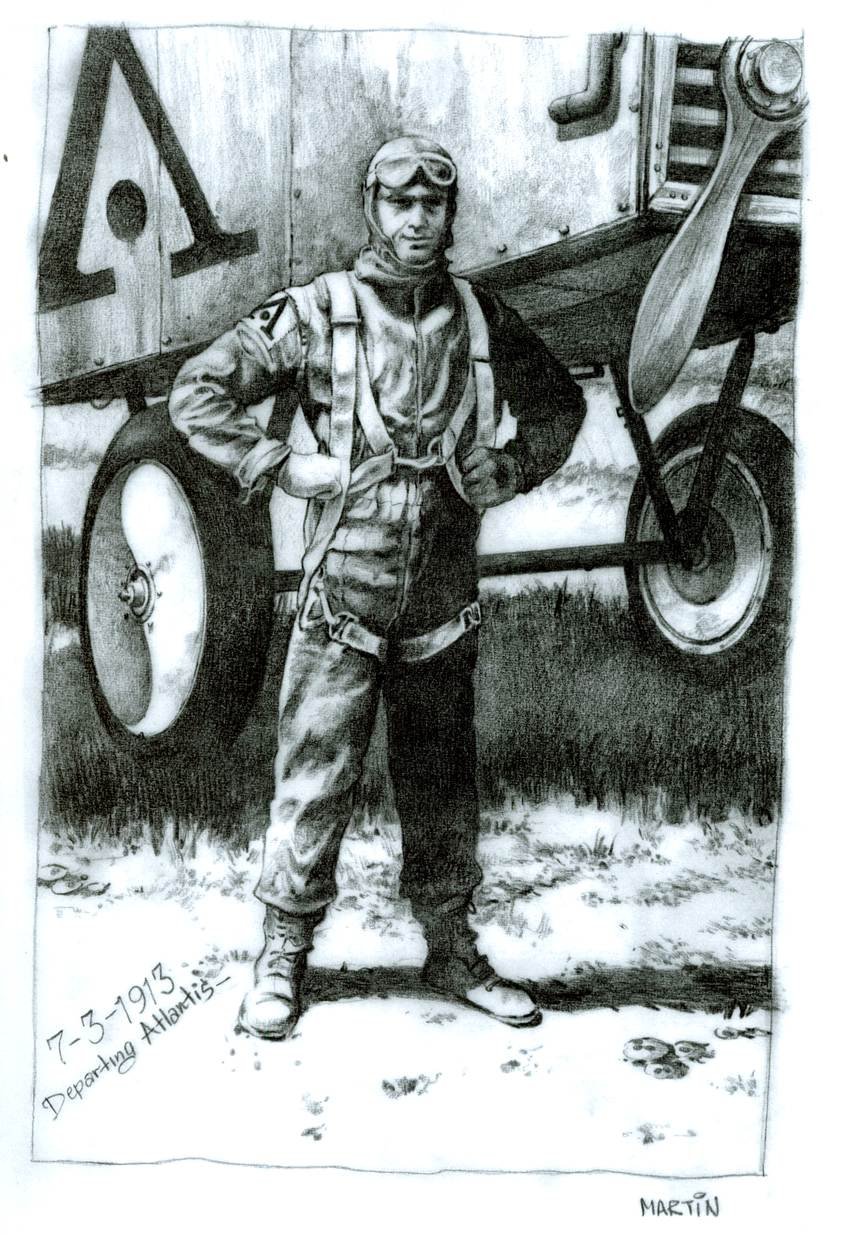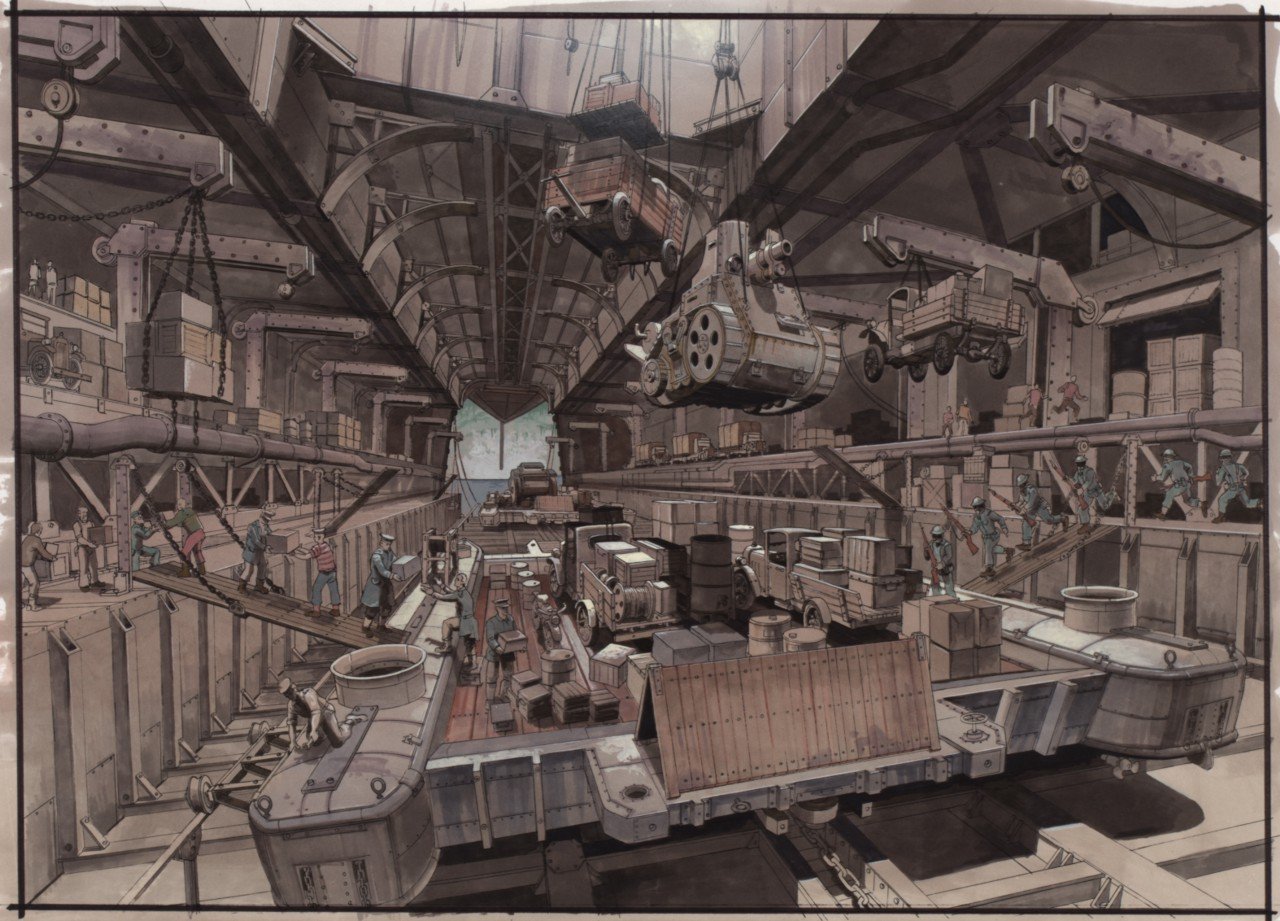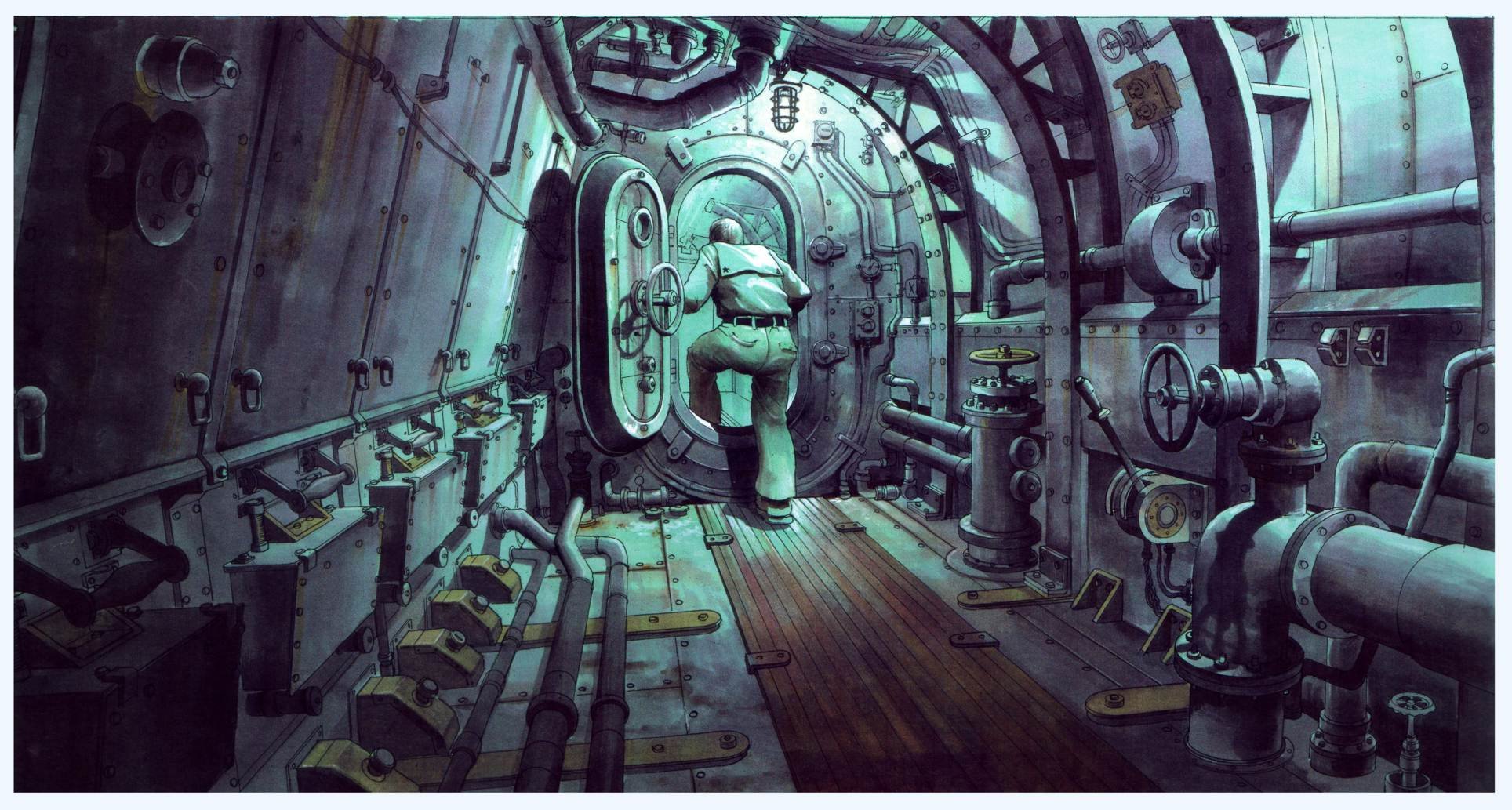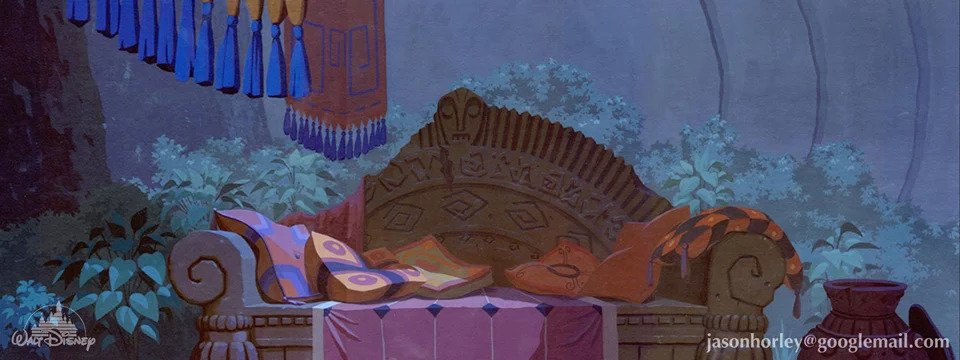Art of Atlantis: The Lost Empire
/ CDRAtlantis: The Lost Empire is an animation movie directed by Gary Trousdale and Kirk Wise, and produced by Walt Disney Feature Animation, in 2001. The story was loosely inspired by the works of Jules Verne.
The idea for Atlantis: The Lost Empire was conceived in October 1996 when Don Hahn, Gary Trousdale, Kirk Wise, and Tab Murphy launched at a Mexican restaurant in Burbank, California. Having recently completed The Hunchback of Notre Dame the producer and directors wanted to keep the Hunchback crew together for another film with an Adventureland setting rather than a Fantasyland setting. Drawing inspiration from Jules Verne's Twenty Thousand Leagues Under the Seas (1870), they set out to make a film that would fully explore Atlantis (compared to the brief visit depicted in Verne's novel). While primarily utilizing the Internet to research the mythology of Atlantis, the filmmakers became interested in the clairvoyant readings of Edgar Cayce and decided to incorporate some of his ideas—notably that of a mother-crystal that provides power, healing, and longevity to the Atlanteans, into the story. They also visited museums and old army installations to study the technology of the early 20th century (the film's time period), and traveled underground in New Mexico's Carlsbad Caverns to view the subterranean trails which would serve as a model for the approach to Atlantis in the film. The filmmakers wanted to avoid the common depiction of Atlantis as "crumbled Greek columns underwater", said Wise. "From the get-go, we were committed to designing it top to bottom. Let's get the architectural style, clothing, heritage, customs, how they would sleep, and how they would speak. So we brought people on board who would help us develop those ideas." Art director David Goetz stated, "We looked at Mayan architecture, styles of ancient, unusual architecture from around the world, and the directors really liked the look of Southeast Asian architecture." The team later took ideas from other architectural forms, including Cambodian, Indian, and Tibetan works. Hahn added, "If you take and deconstruct architecture from around the world into one architectural vocabulary, that's what our Atlantis looks like". The overall design and circular layout of Atlantis were also based on the writings of Plato, and his quote "in a single day and night of misfortune, the island of Atlantis disappeared into the depths of the sea" was influential from the beginning of production. The crew wore T-shirts that read "ATLANTIS - Fewer songs, more explosions" due to the film's plan as an action-adventure (unlike previous Disney animated features, which were musicals).
At the peak of its production, 350 animators, artists, and technicians were working on Atlantis at all three Disney animation studios: Walt Disney Feature Animation (Burbank, California), Disney Feature Animation Florida (Orlando), and Disney Animation France (Paris). The film was one of the few Disney animated features produced and shot in 35mm anamorphic format. The directors felt that a widescreen image was crucial, as a nostalgic reference to old action-adventure films presented in the CinemaScope format (2.39:1), noting Raiders of the Lost Ark as an inspiration. Because switching to the format would require animation desks and equipment designed for widescreen to be purchased, Disney executives were at first reluctant about the idea. The production team found a simple solution by drawing within a smaller frame on the same paper and equipment used for standard aspect ratio (1.66:1) Disney-animated films. Layout supervisor Ed Ghertner wrote a guide to the widescreen format for use by the layout artists and mentioned that one advantage of widescreen was that he could keep characters in scenes longer because of additional space to walk within the frame. Wise drew further inspiration for the format from filmmakers David Lean and Akira Kurosawa. The film's visual style was strongly based upon that of Mike Mignola, the comic book artist behind Hellboy. Mignola was one of four production designers (along with Matt Codd, Jim Martin, and Ricardo Delgado) hired by the Disney studio for the film. Accordingly, he provided style guides, preliminary characters, background designs, and story ideas. "Mignola's graphic, the angular style was a key influence on the 'look' of the characters," stated Wise. Mignola was surprised when first contacted by the studio to work on Atlantis. His artistic influence on the film would later contribute to a cult following. In an interview, Mignola said: “I remember watching a rough cut of the film and these characters have these big, square, weird hands. I said to the guy next to me, "Those are cool hands." And he says to me, "Yeah, they're your hands. We had a whole meeting about how to do your hands." It was so weird I couldn't wrap my brain around it”.
The final pull-out scene of the movie, immediately before the end-title card, was described by the directors as the most difficult scene in the history of Disney animation. They said that the pullout attempt on their prior film, The Hunchback of Notre Dame, "struggled" and "lacked depth"; however, after making advances in the process of multiplaning, they tried the technique again in Atlantis. The scene begins with one 16-inch (40.6 cm) piece of paper showing a close-up of Milo and Kida. As the camera pulls away from them to reveal the newly restored Atlantis, it reaches the equivalent of an 18,000-inch (46,000 cm) piece of paper composed of many individual pieces of paper (24 inches [61 cm] or smaller). Each piece was carefully drawn and combined with animated vehicles simultaneously flying across the scene to make the viewer see a complete, integrated image. At the time of its release, Atlantis: The Lost Empire was notable for using more computer-generated imagery (CGI) than any other Disney traditionally animated feature. To increase productivity, the directors had the digital artists work with the traditional animators throughout the production. Several important scenes required heavy use of digital animation: the Leviathan, the Ulysses submarine and sub-pods, the Heart of Atlantis, and the Stone Giants. During production, after Matt Codd and Jim Martin designed the Ulysses on paper, Greg Aronowitz was hired to build a scale model of the submarine, to be used as a reference for drawing the 3D Ulysses. The final film included 362 digital-effects shots, and computer programs were used to seamlessly join the 2D and 3D artwork. One scene that took advantage of this was the "sub-drop" scene, where the 3D Ulysses was dropped from its docking bay into the water. As the camera floated toward it, a 2D Milo was drawn to appear inside, tracking the camera. The crew noted that it was challenging to keep the audience from noticing the difference between the 2D and 3D drawings when they were merged. The digital production also gave the directors a unique "virtual camera" for complicated shots within the film. With the ability to operate in the z-plane, this camera moved through a digital wire-frame set; the background and details were later hand-drawn over the wireframes. This was used in the opening flight scene through Atlantis and the submarine chase through the undersea cavern with the Leviathan in pursuit.
The pictures on this page are a collection of artworks created for this movie.
THE STORY
In 6,800 BC, an explosion sent a tsunami toward the city of Atlantis. The Queen left Princess Kida behind and was lifted up into a floating crystal, which merged with the Queen and created a protective dome over the city's innermost district, which sank beneath the waves. 8,714 years later, in 1914, Milo Thatch, a Smithsonian Institution linguist who is ridiculed for his dream of finding Atlantis, is introduced by Helga Sinclair to eccentric millionaire Preston B. Whitmore, an old friend of Milo's grandfather. Whitmore reveals that he made a bet with Milo's grandfather to fund an expedition to Atlantis and gives Milo the Shepherd's Journal, a book describing the history and path to Atlantis, offering him a place in the expedition.
The expedition is headed by Commander Rourke and includes Helga; demolitions expert Vinny; geologist Molière; medical officer Dr. Sweet; mechanic Audrey; radio operator Mrs. Packard; chef Cookie; and dozens of soldiers. Their submarine the Ulysses is attacked and destroyed by a mechanical leviathan guarding the entrance to Atlantis, leaving only a handful of survivors. Following the journal, they travel through a dormant volcano and eventually arrive at Atlantis, where they are met by the still-young Princess Kida. Against her father's wishes, Kida enlists Milo to help Atlantis regain its glory, as its culture and knowledge have been decaying for centuries. Milo learns that a huge crystal, the Heart of Atlantis, gives the people longevity, and once powered their devices via smaller crystals they all wear. He also discovers that Rourke and the rest of the crew have known all along of the crystal and used the expedition as part of Rourke's evil plan to steal it and destroy Atlantis…

Ready for more?
Discover thousands of model sheets, concept designs, background paintings from the best animation movies and TV series!


